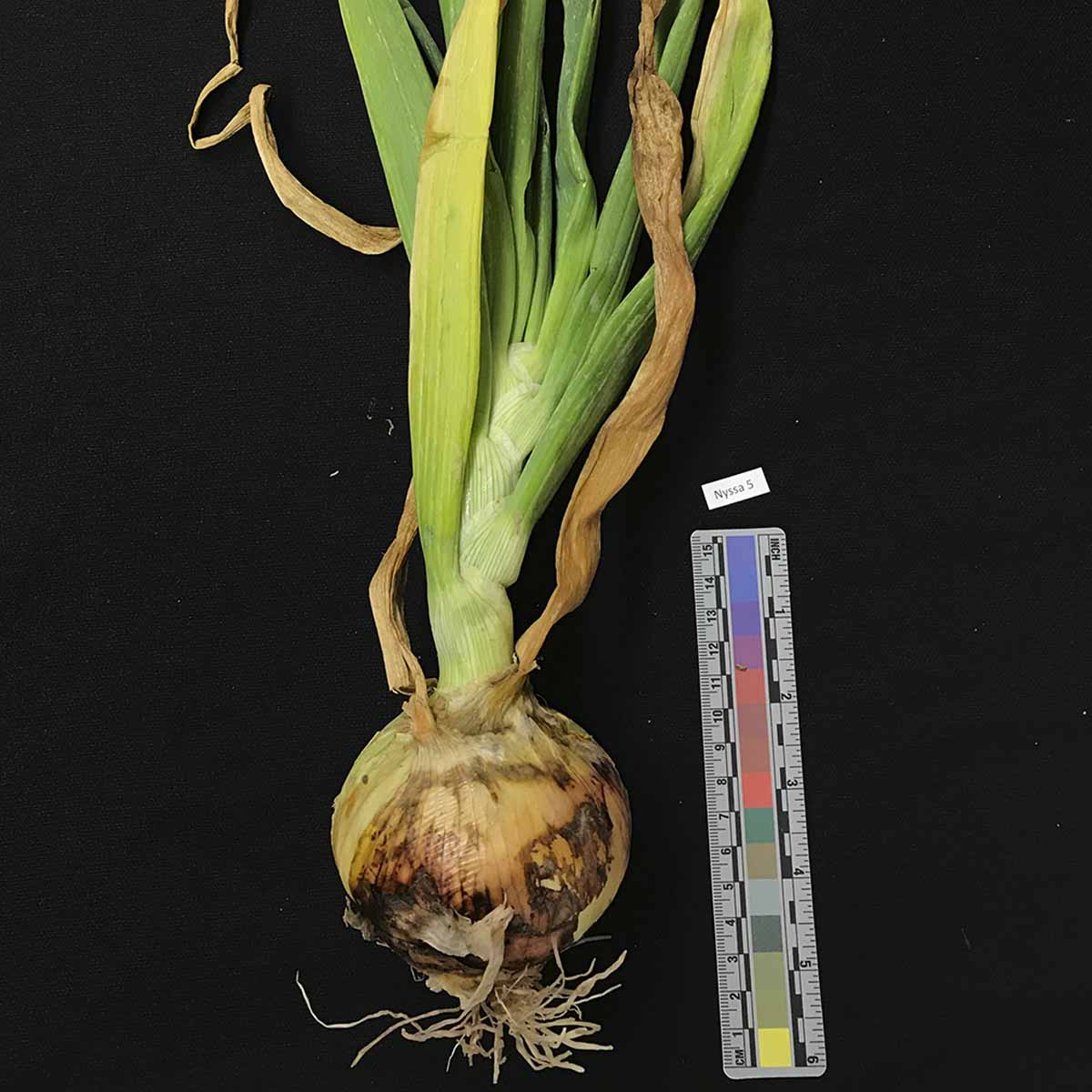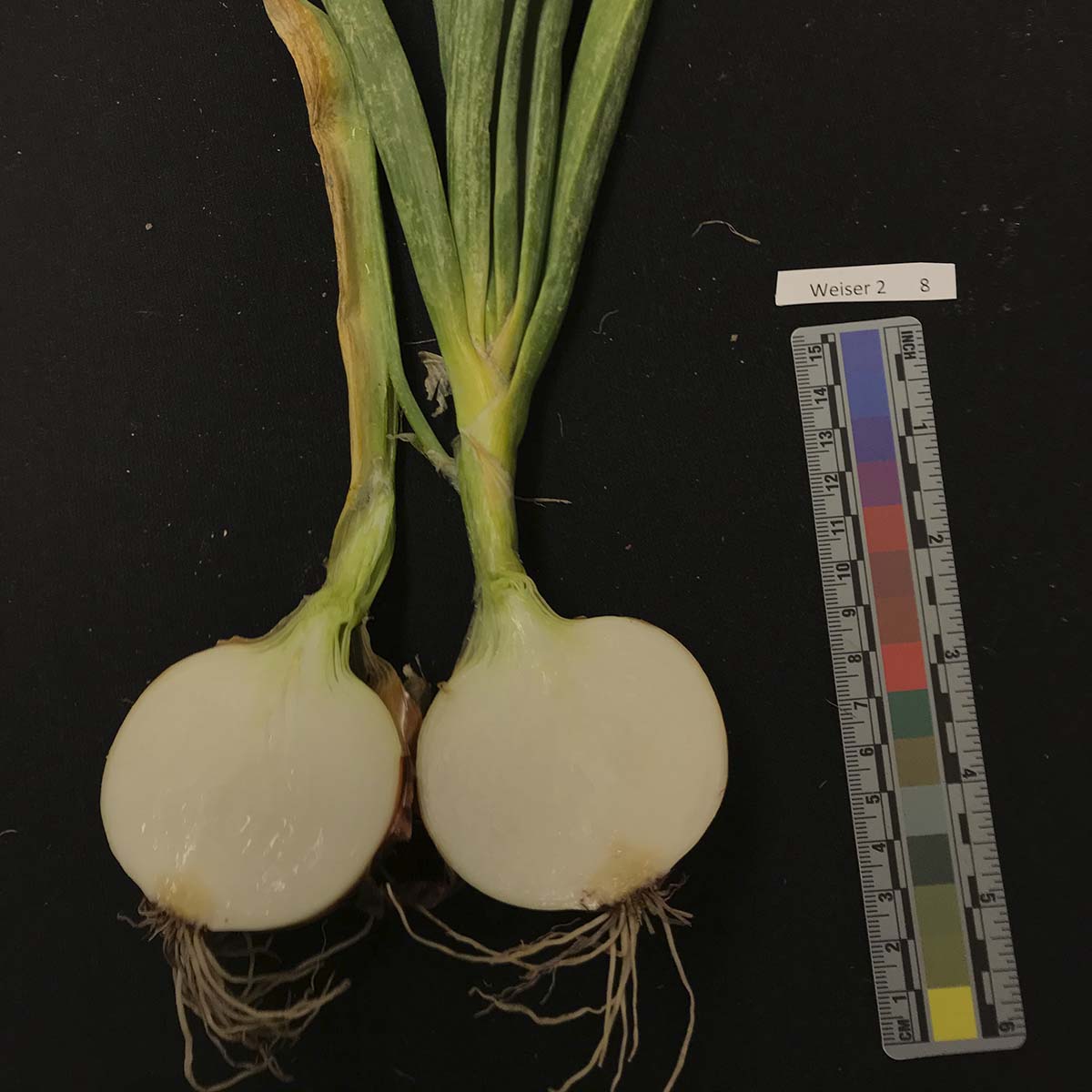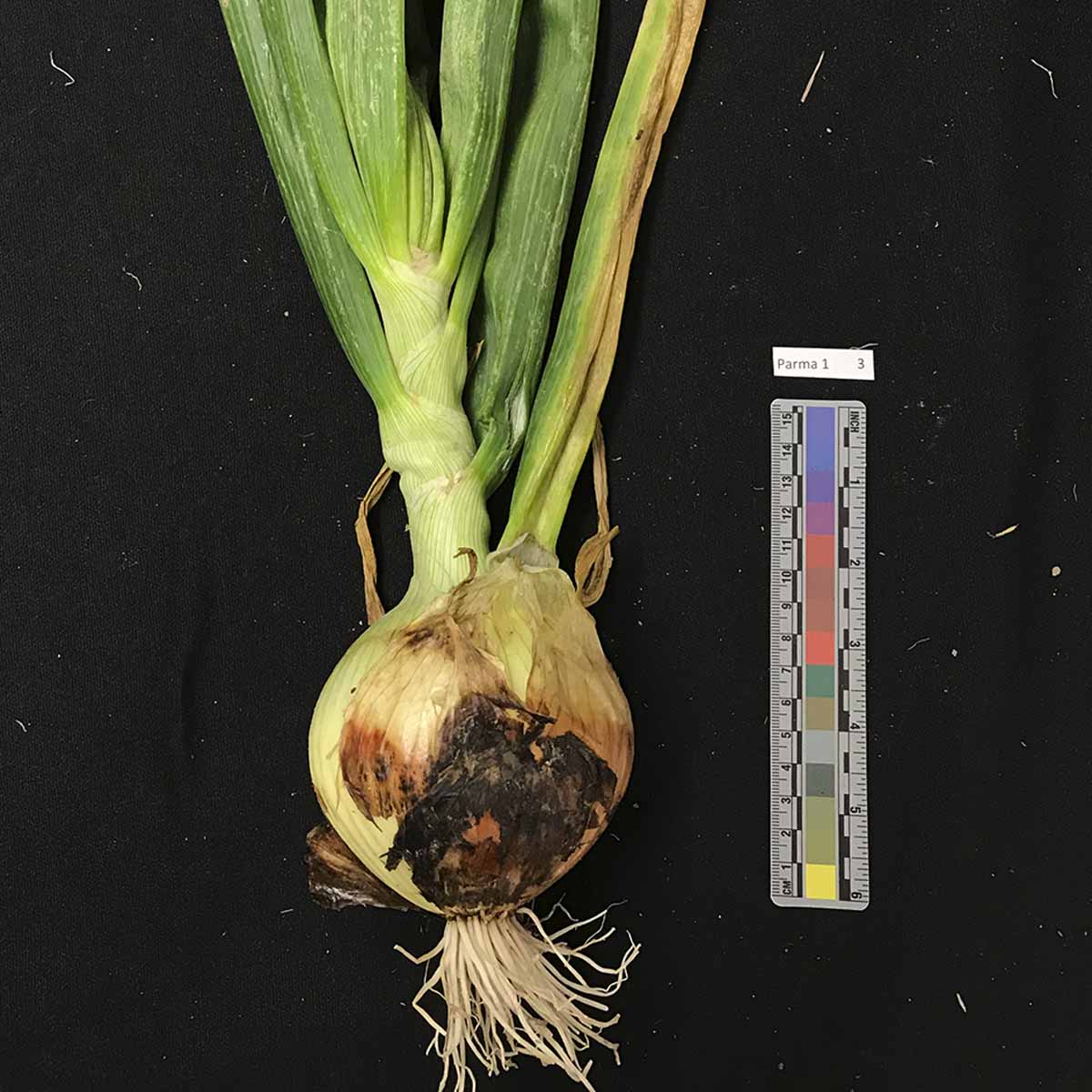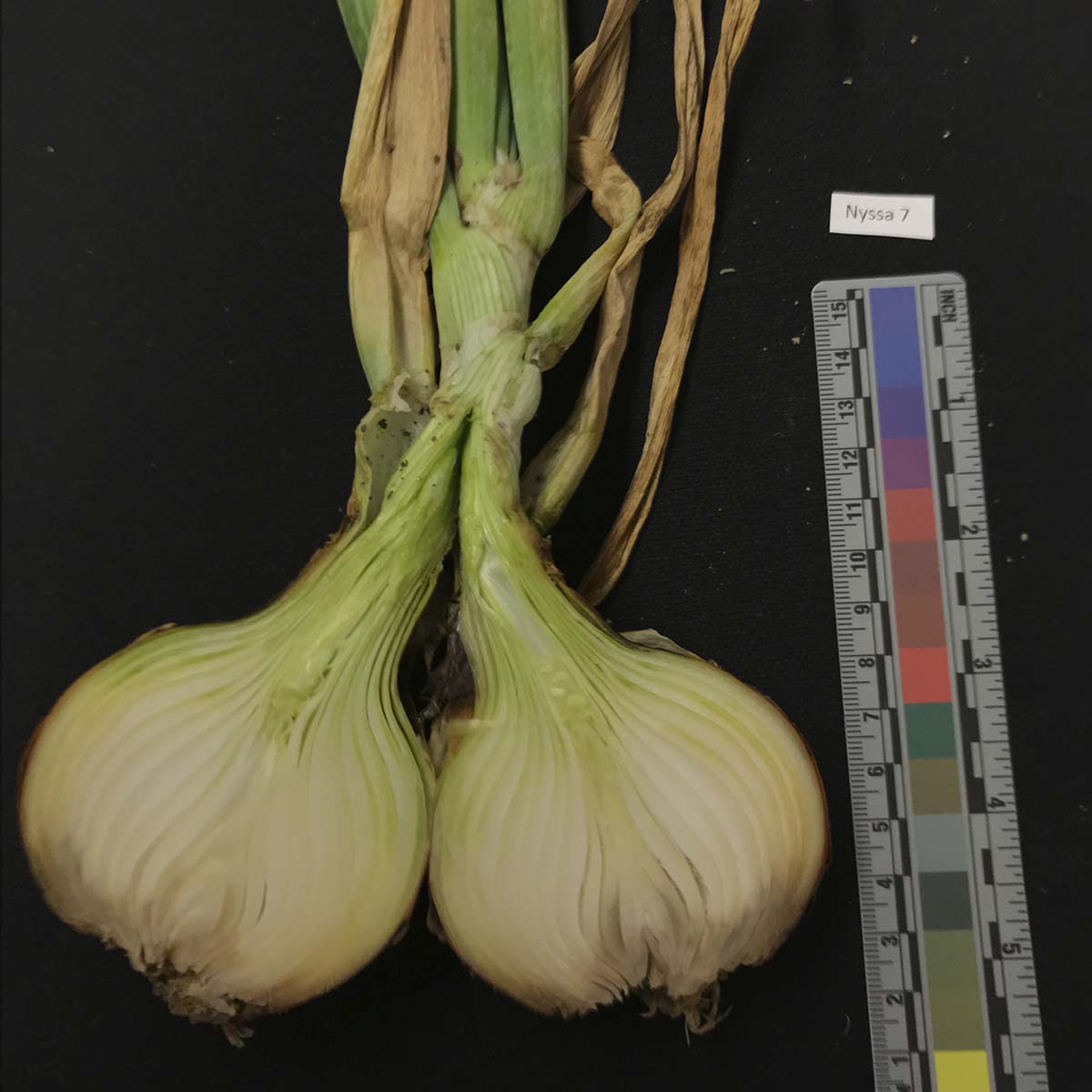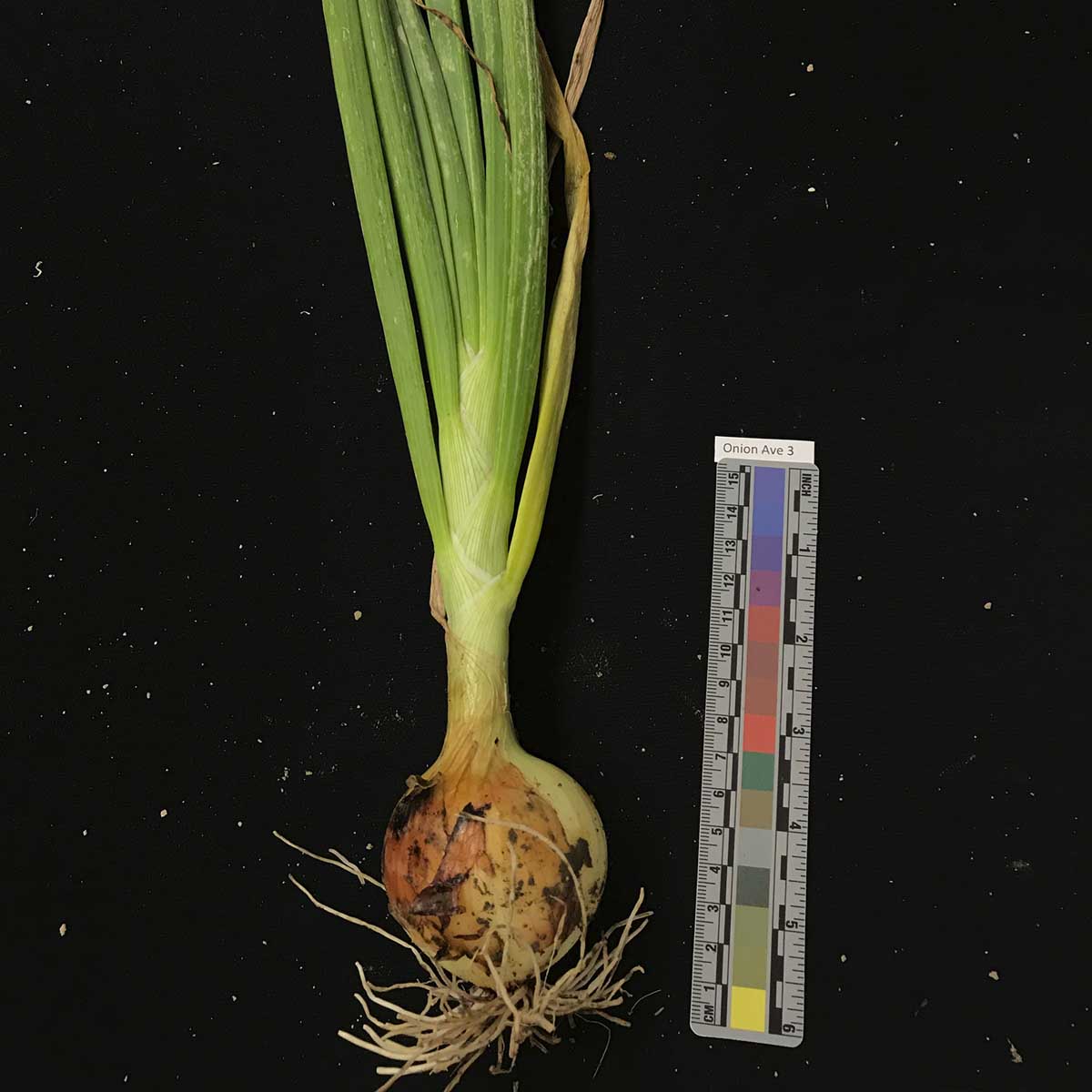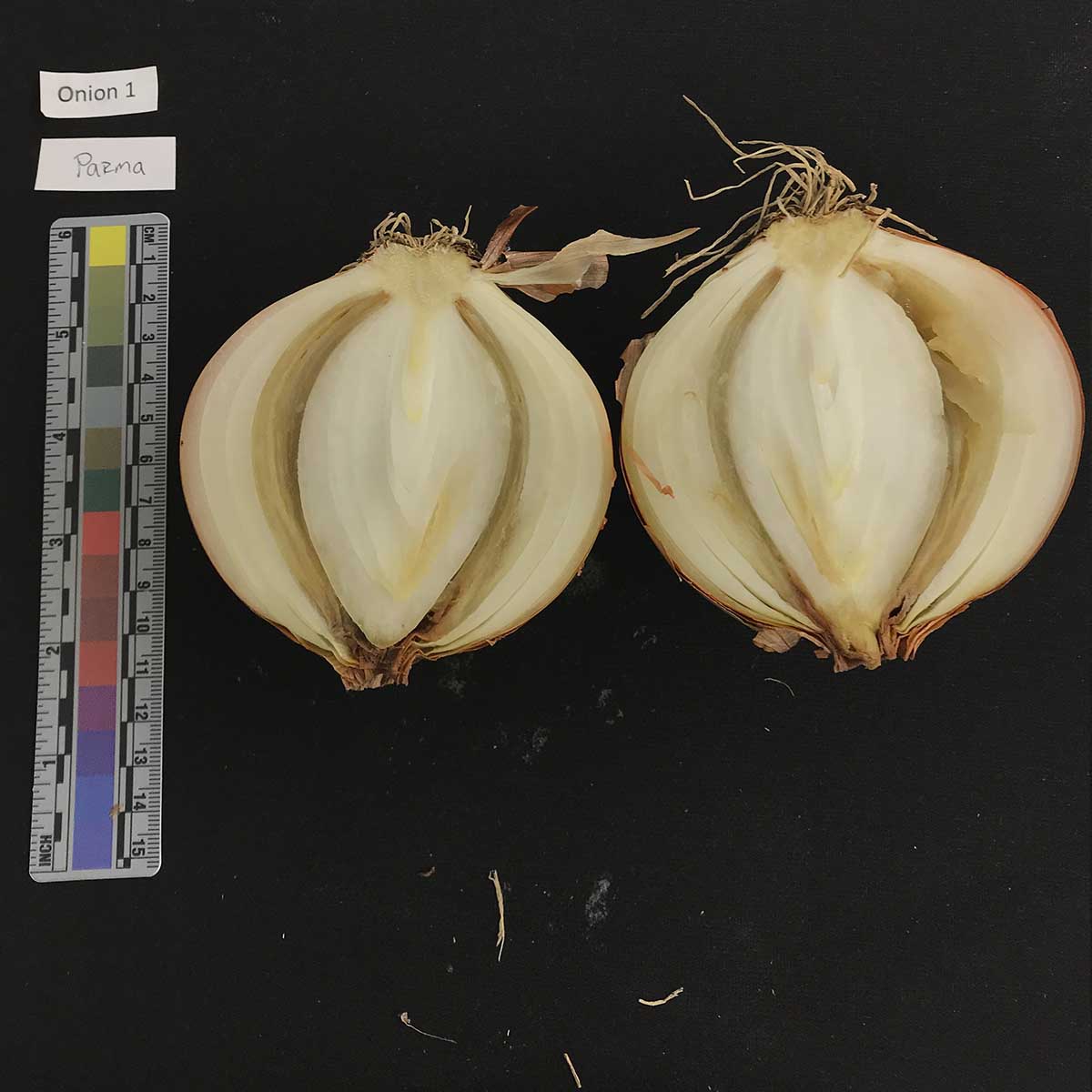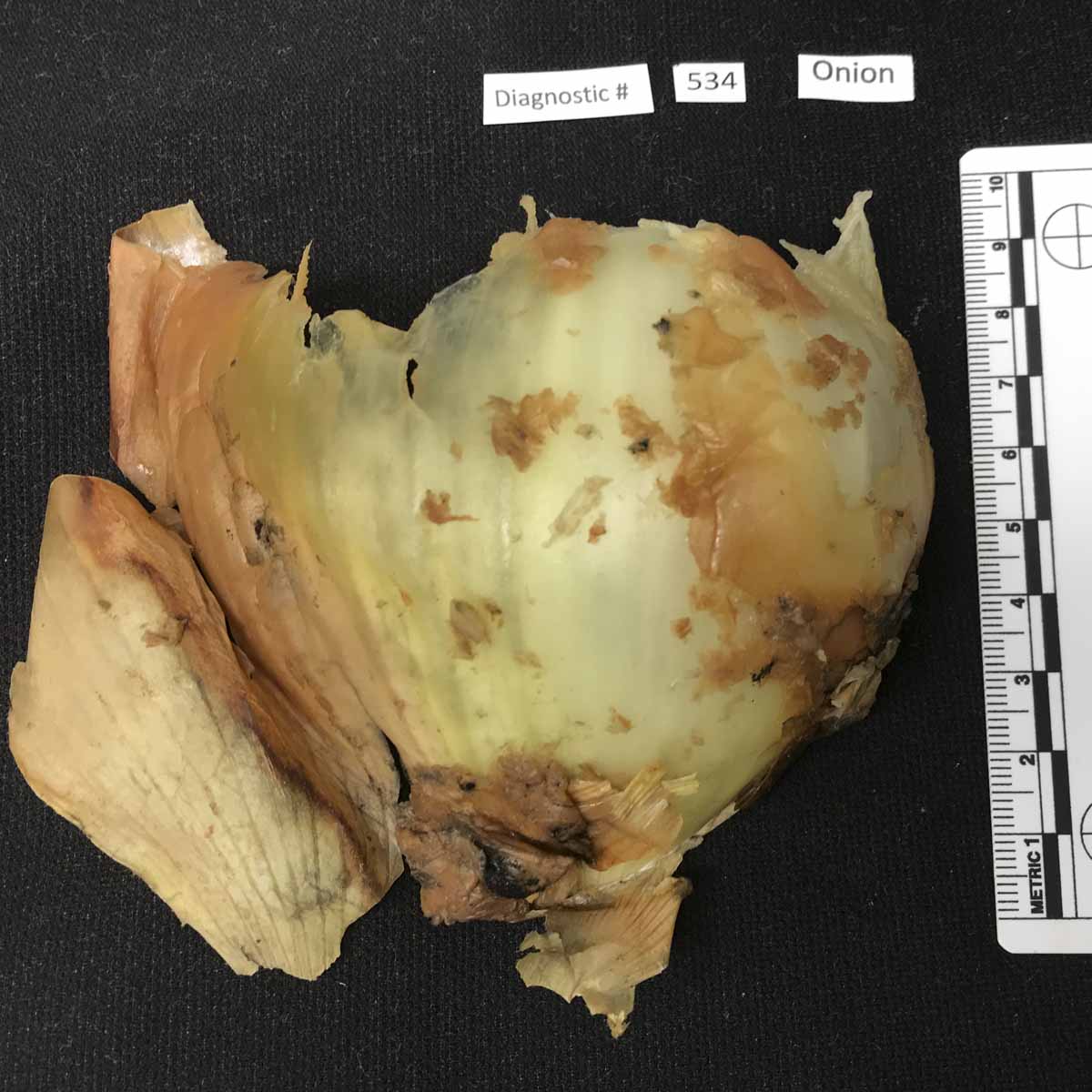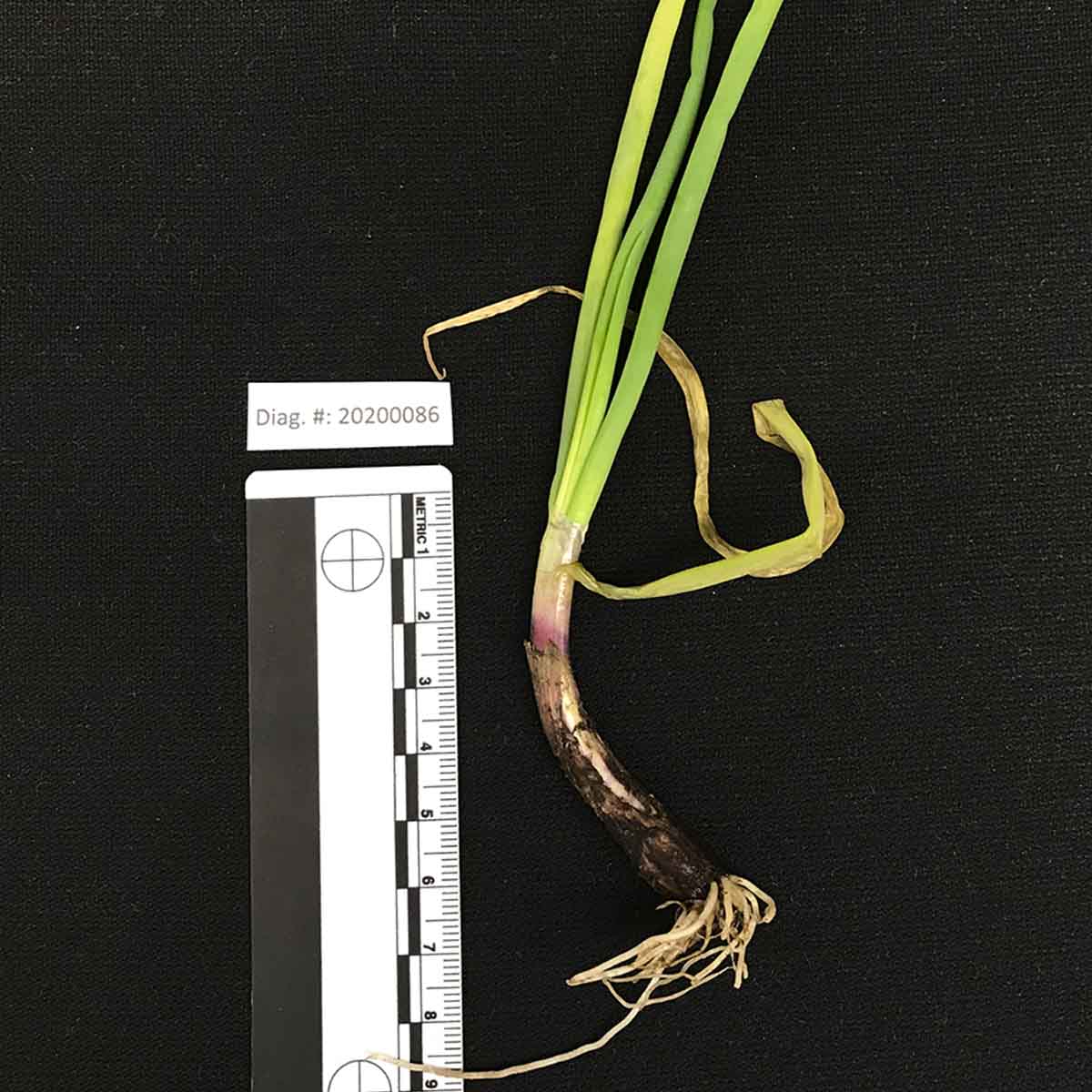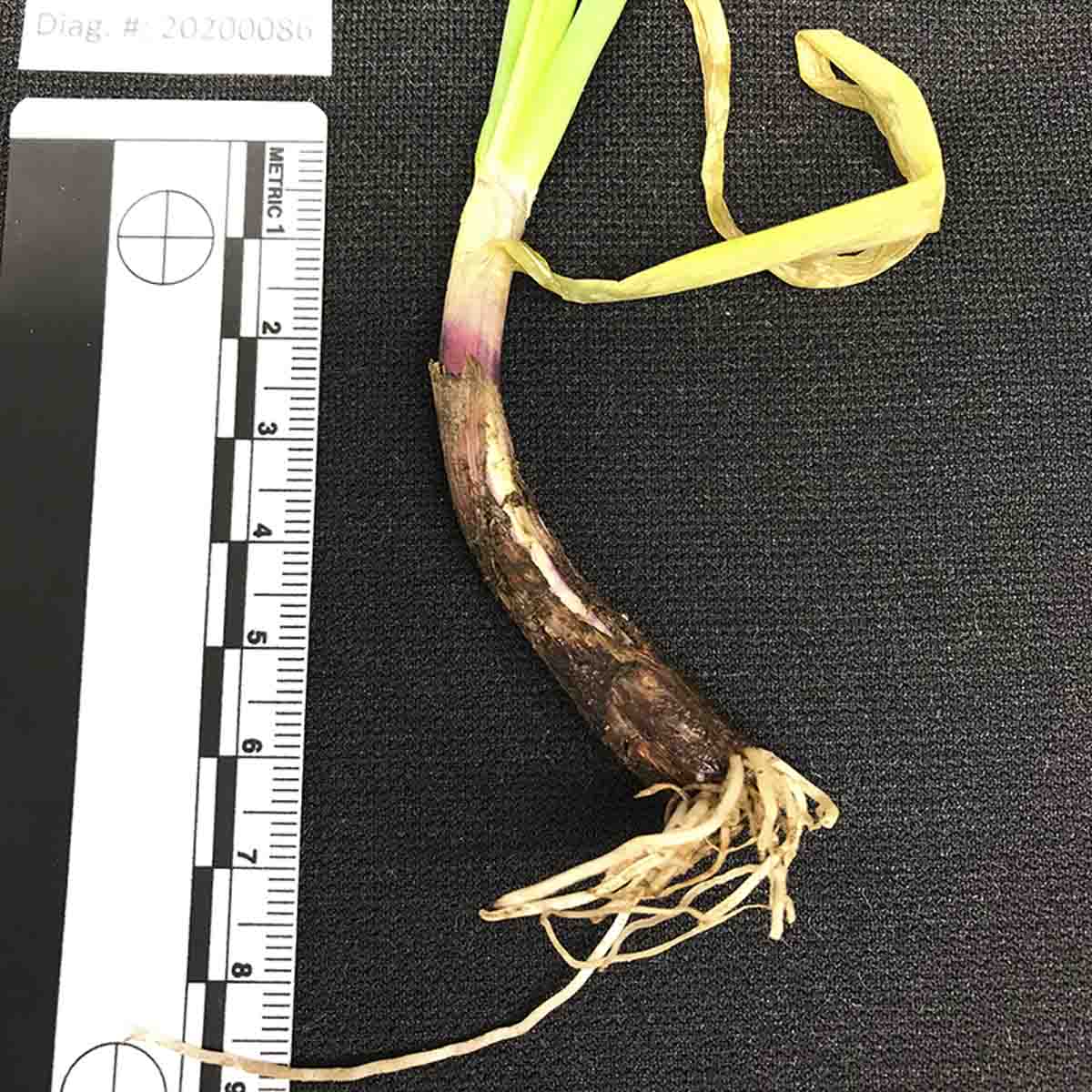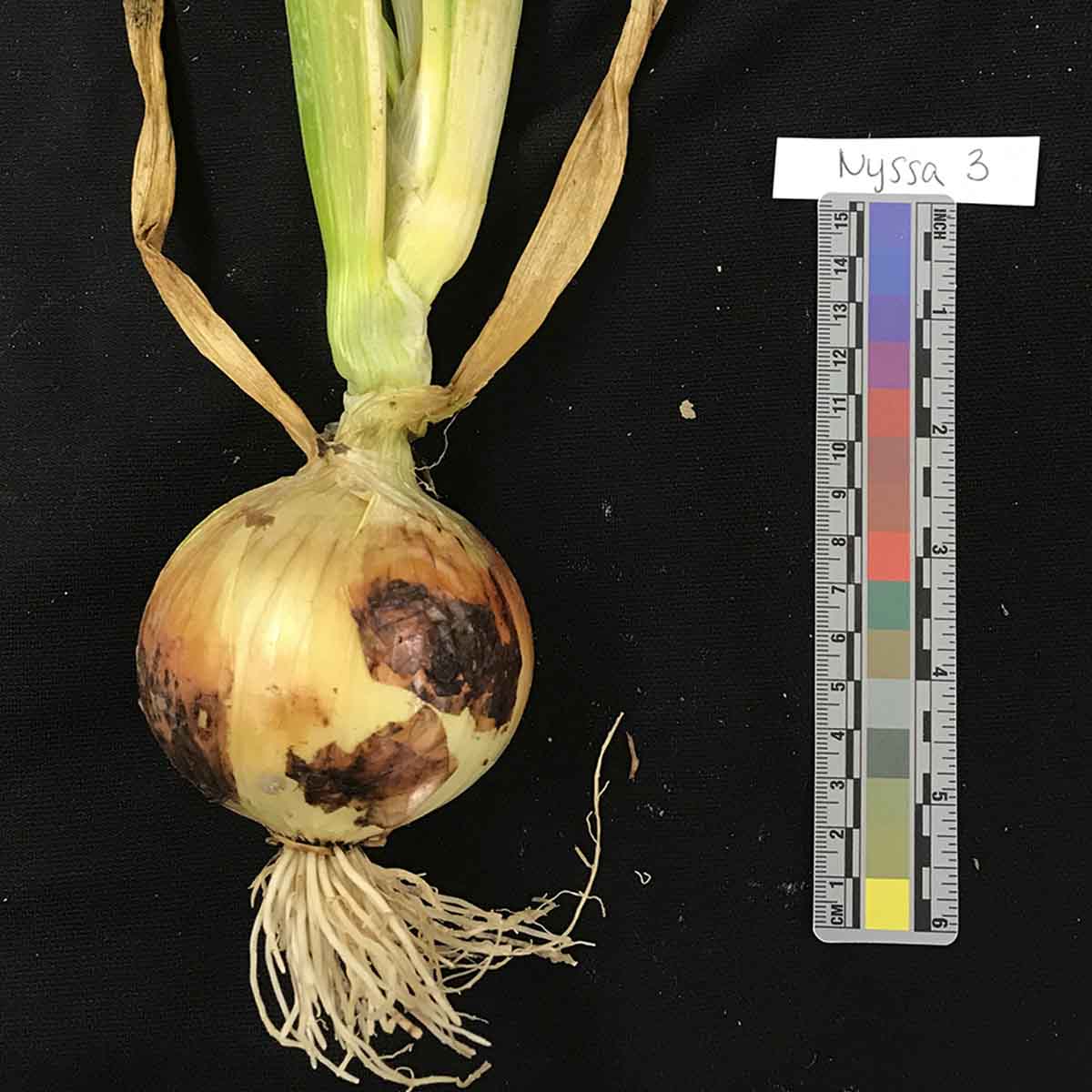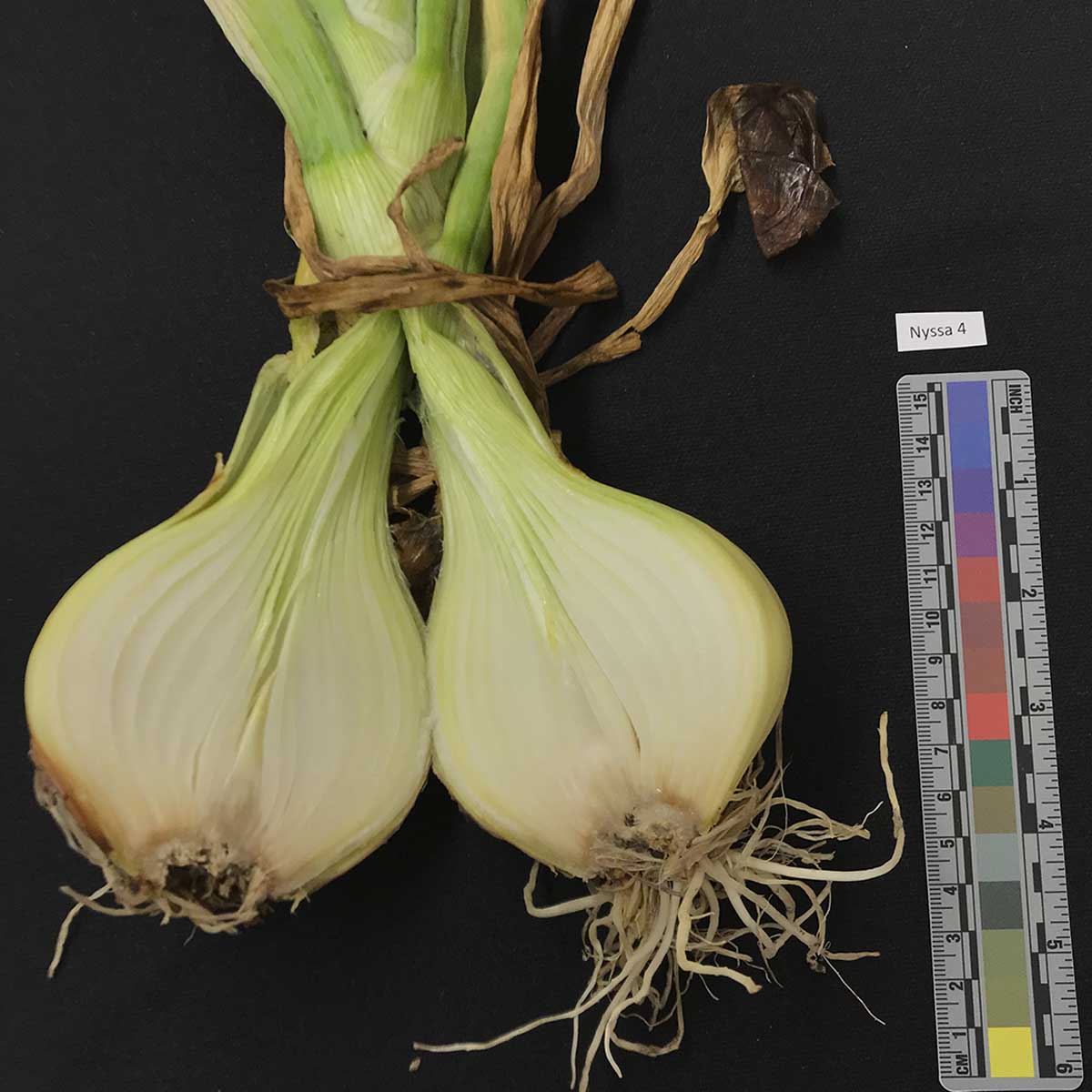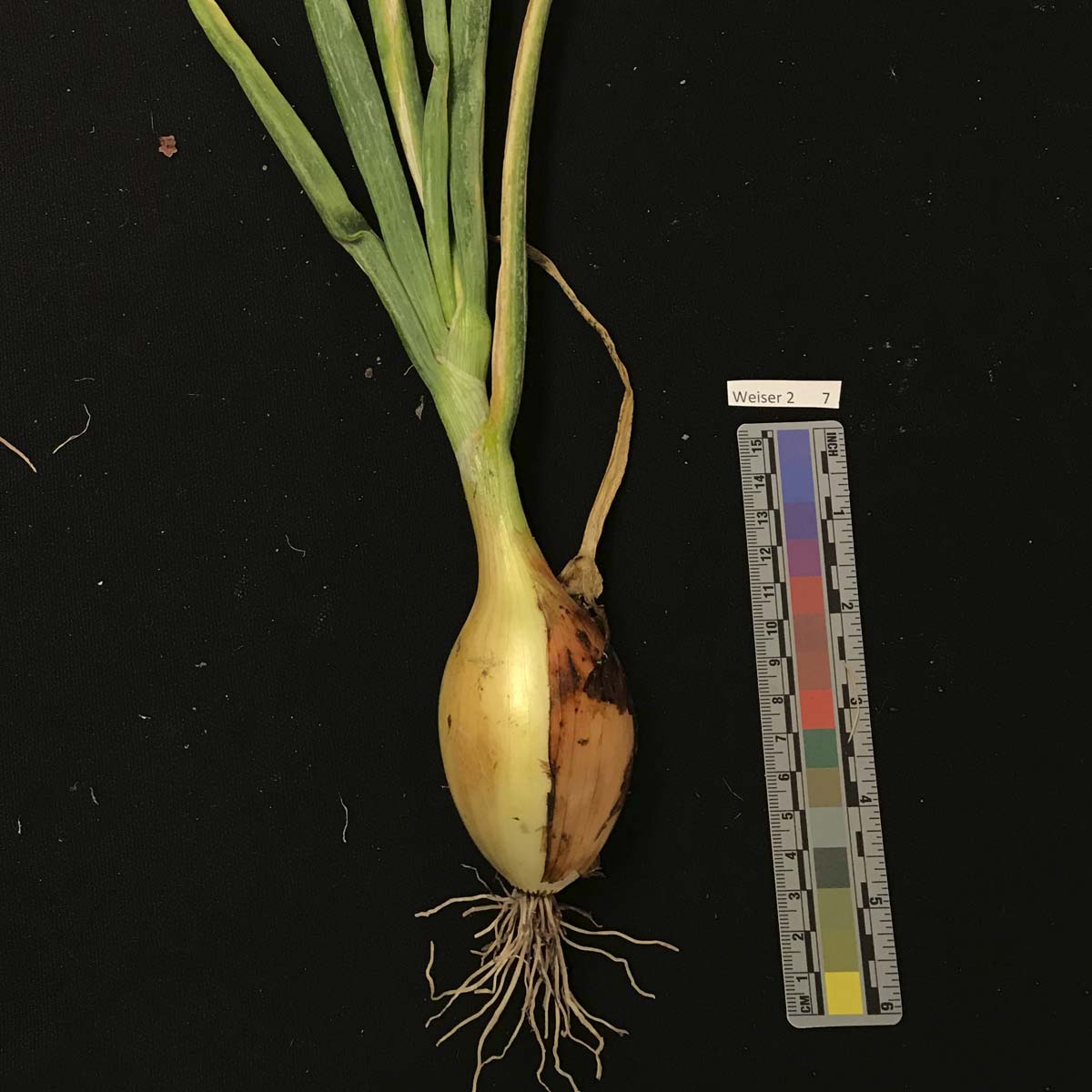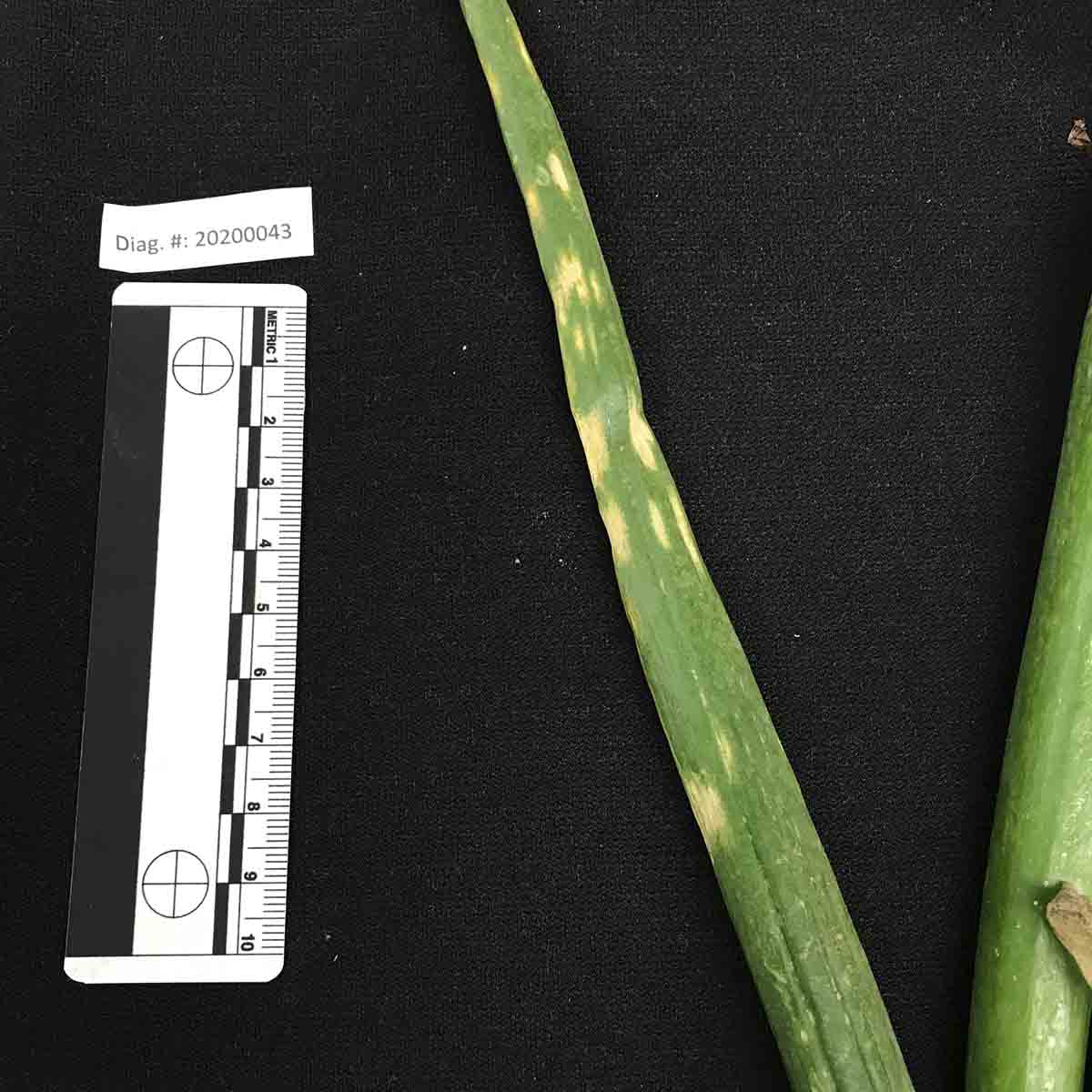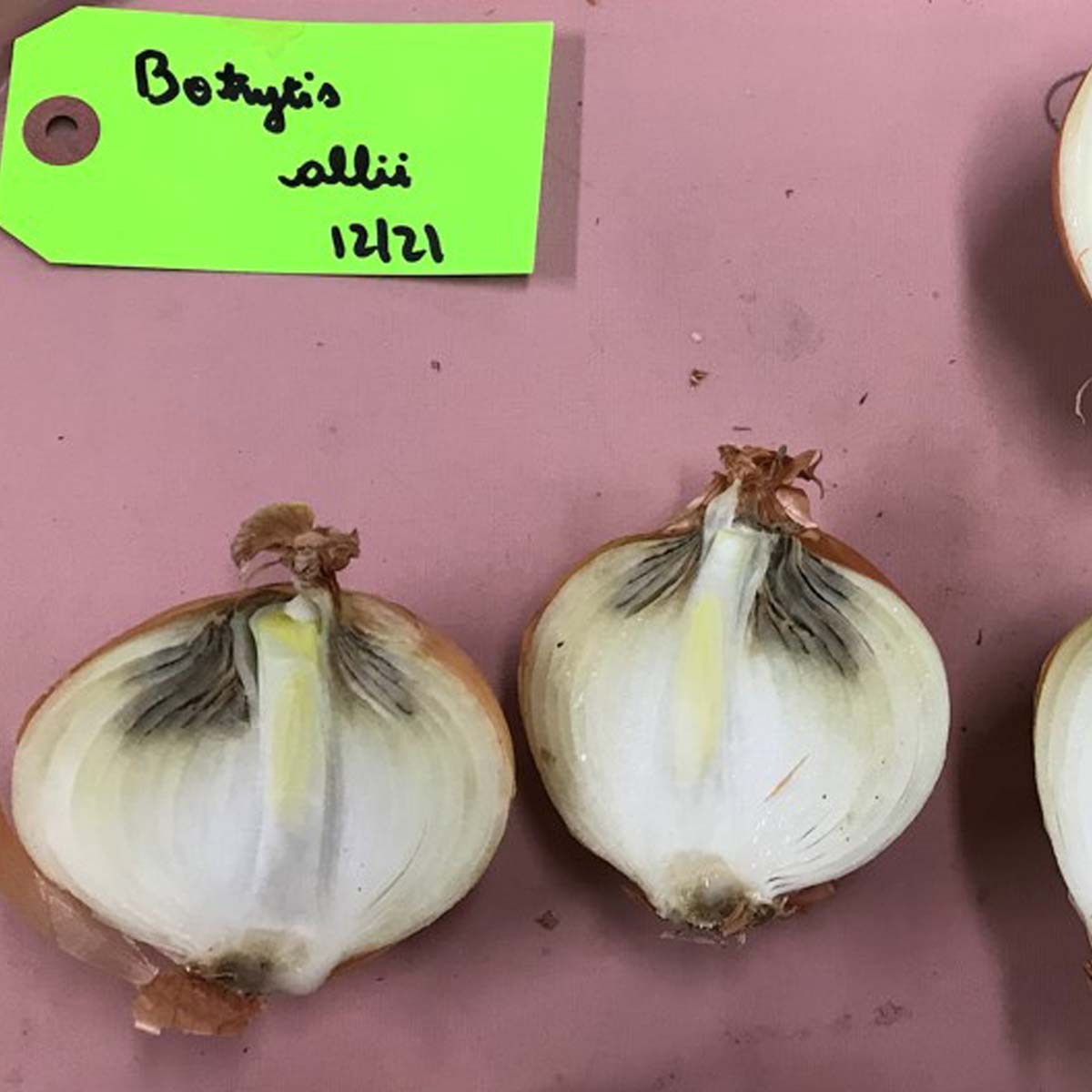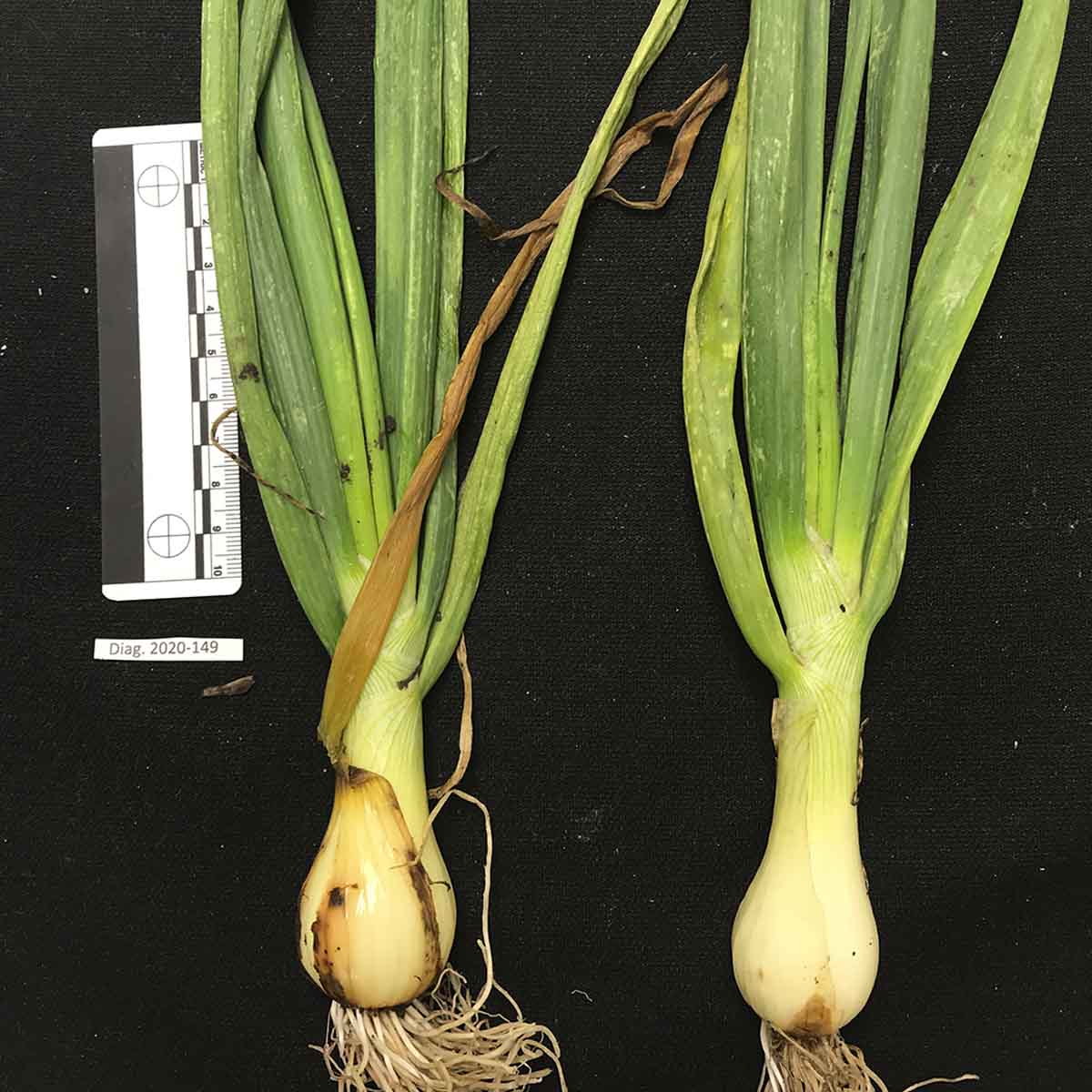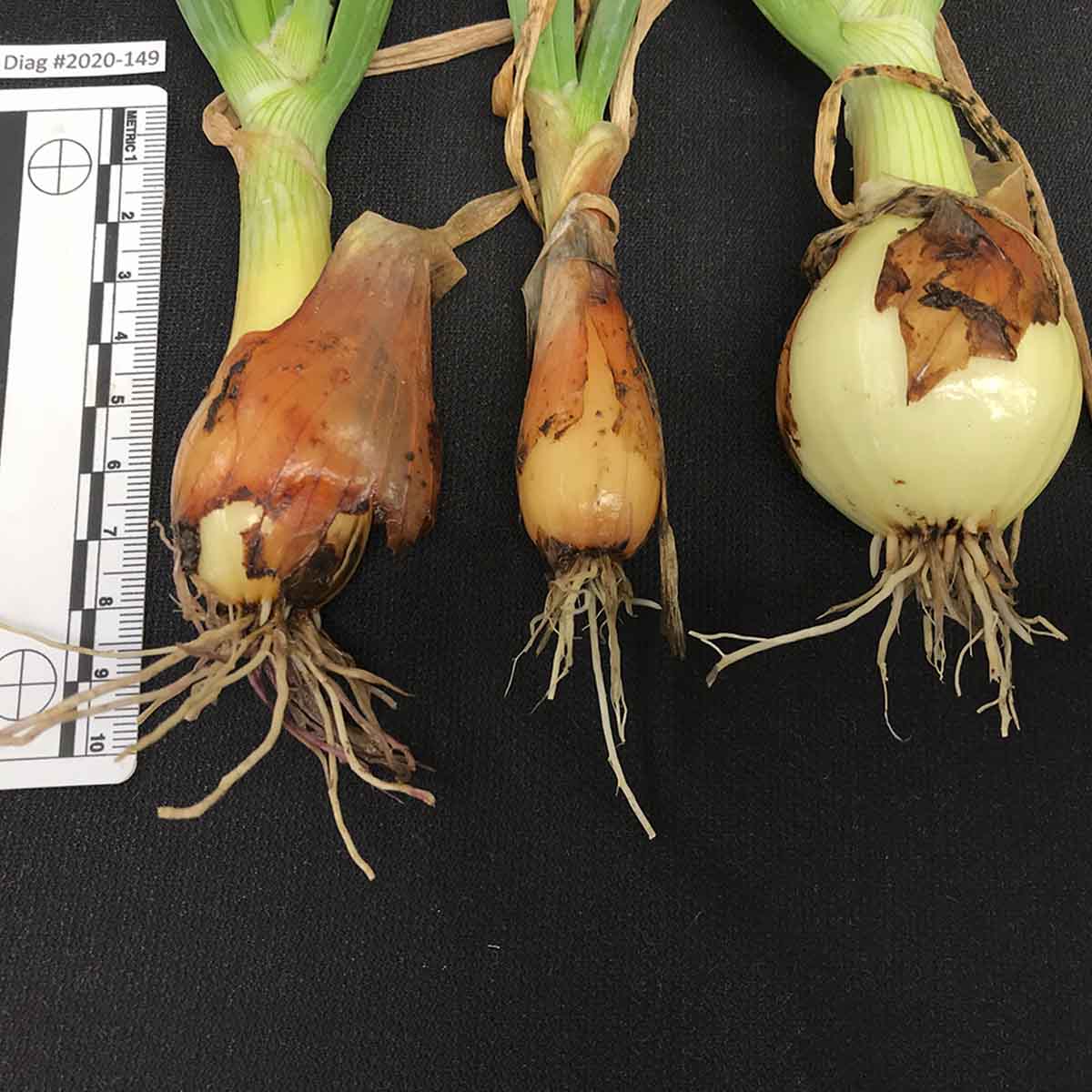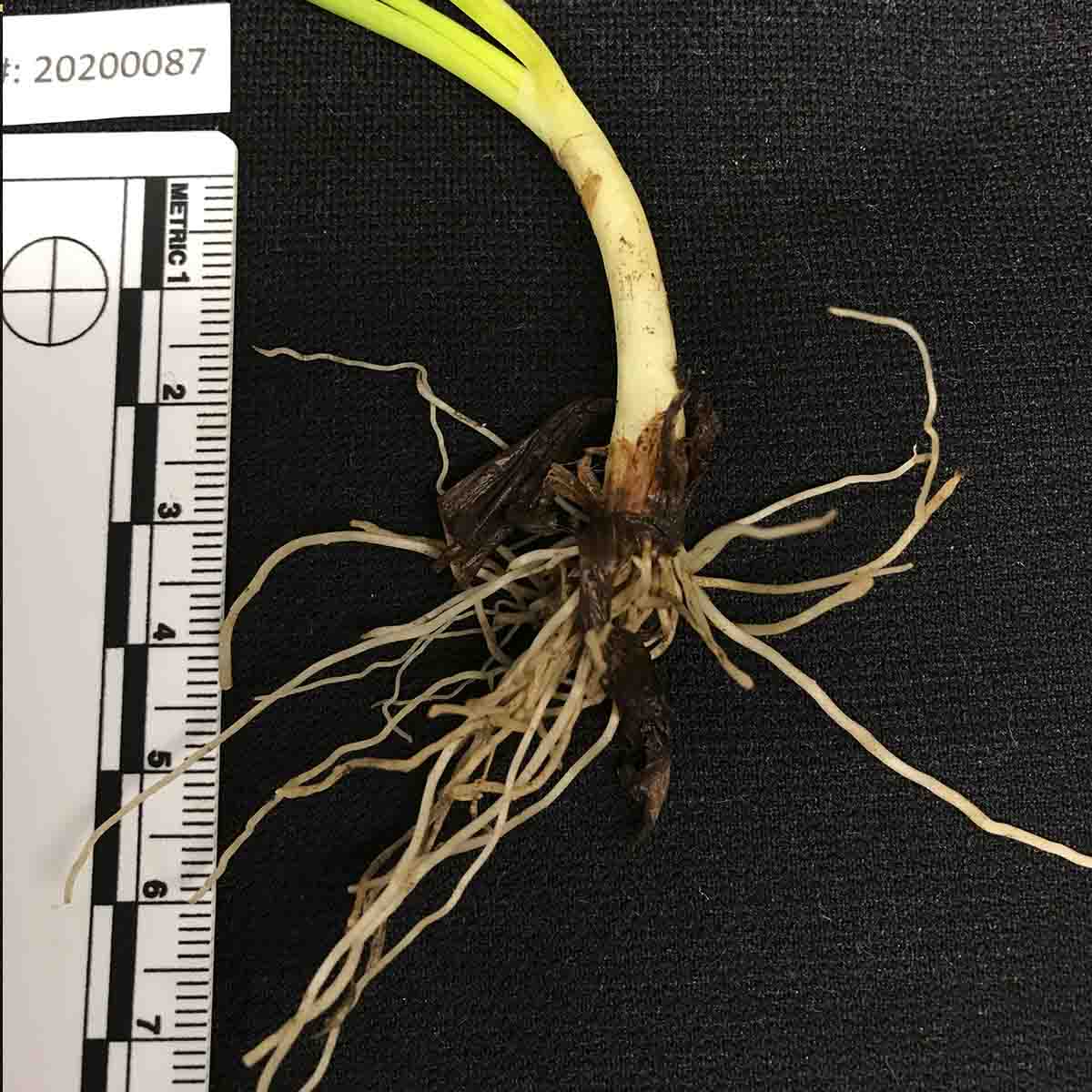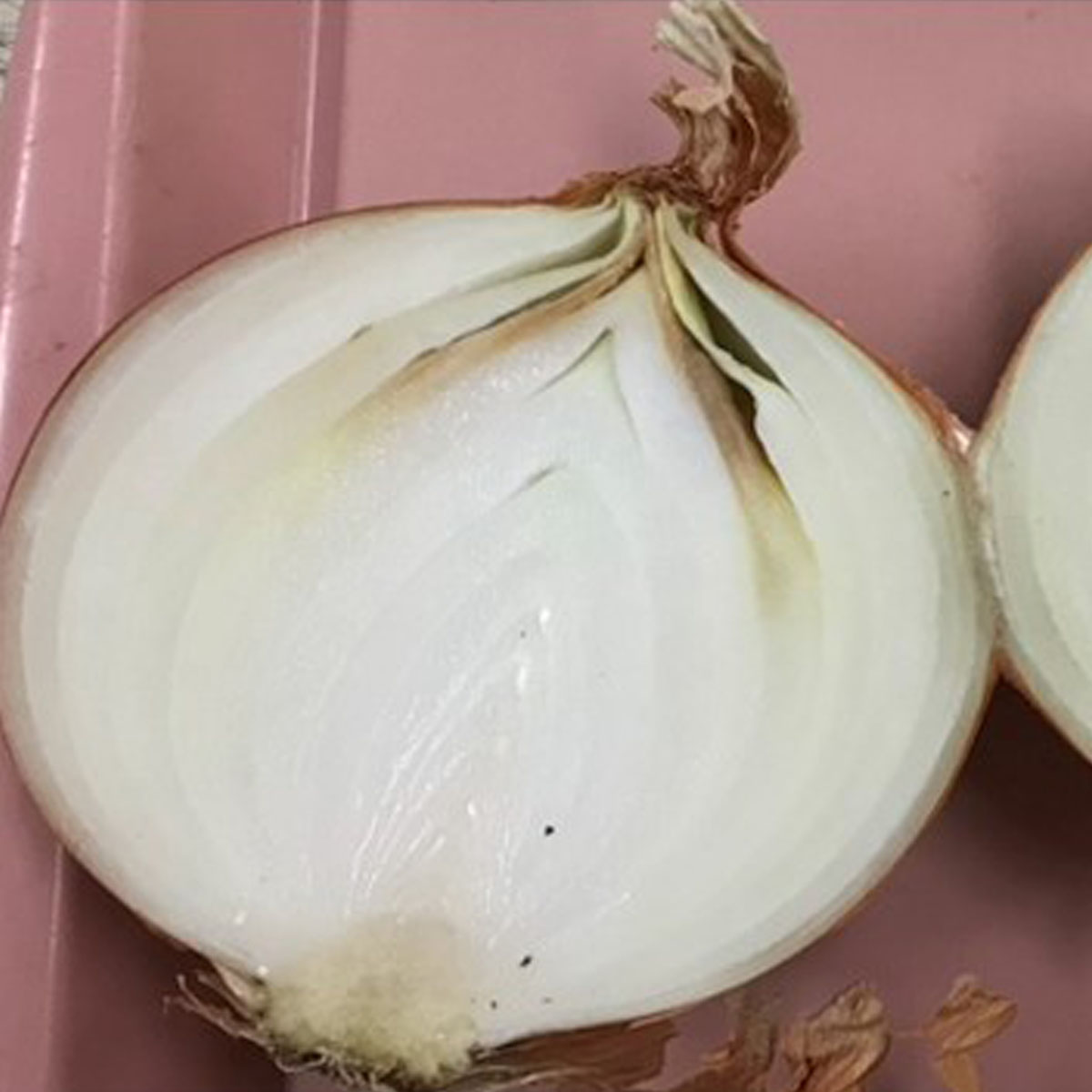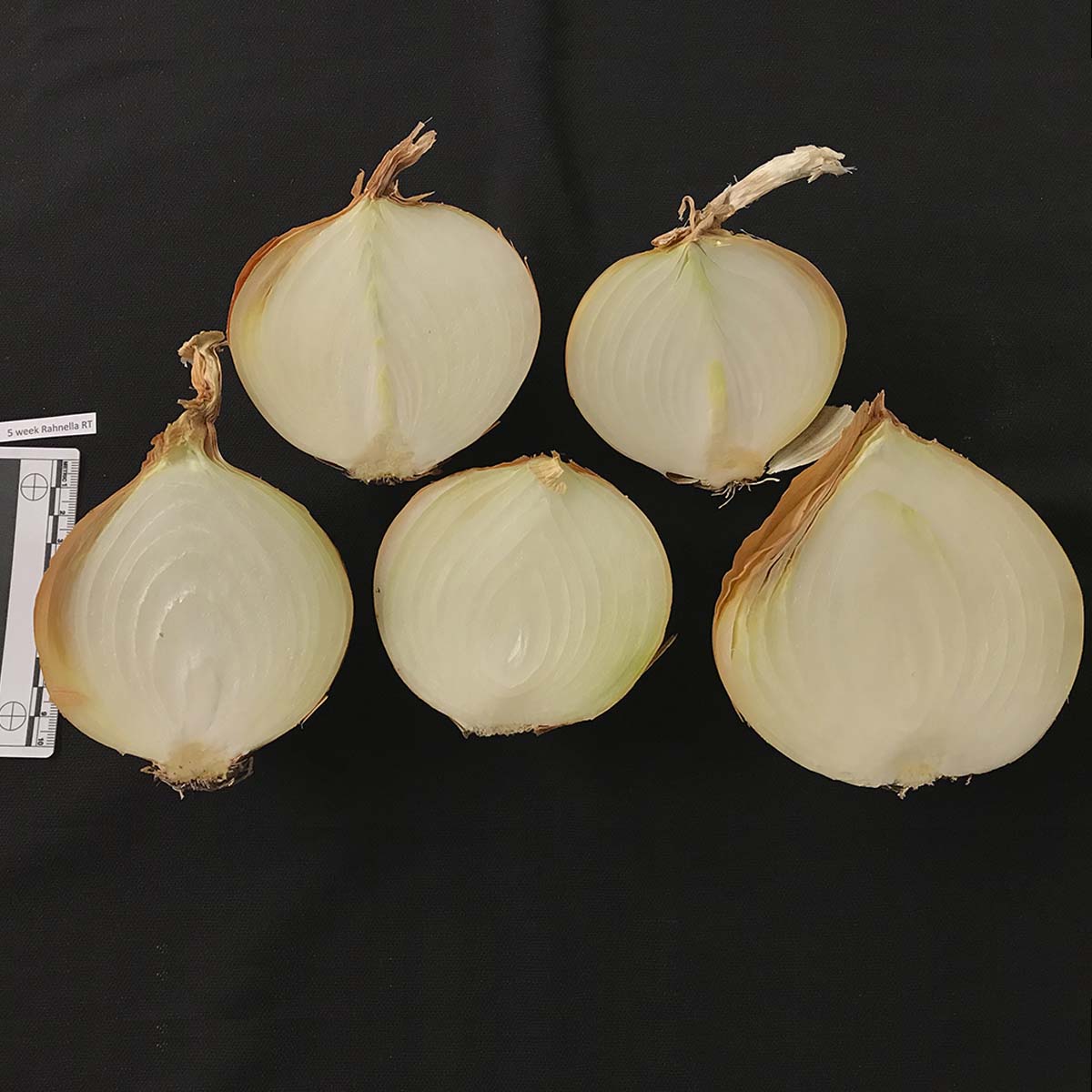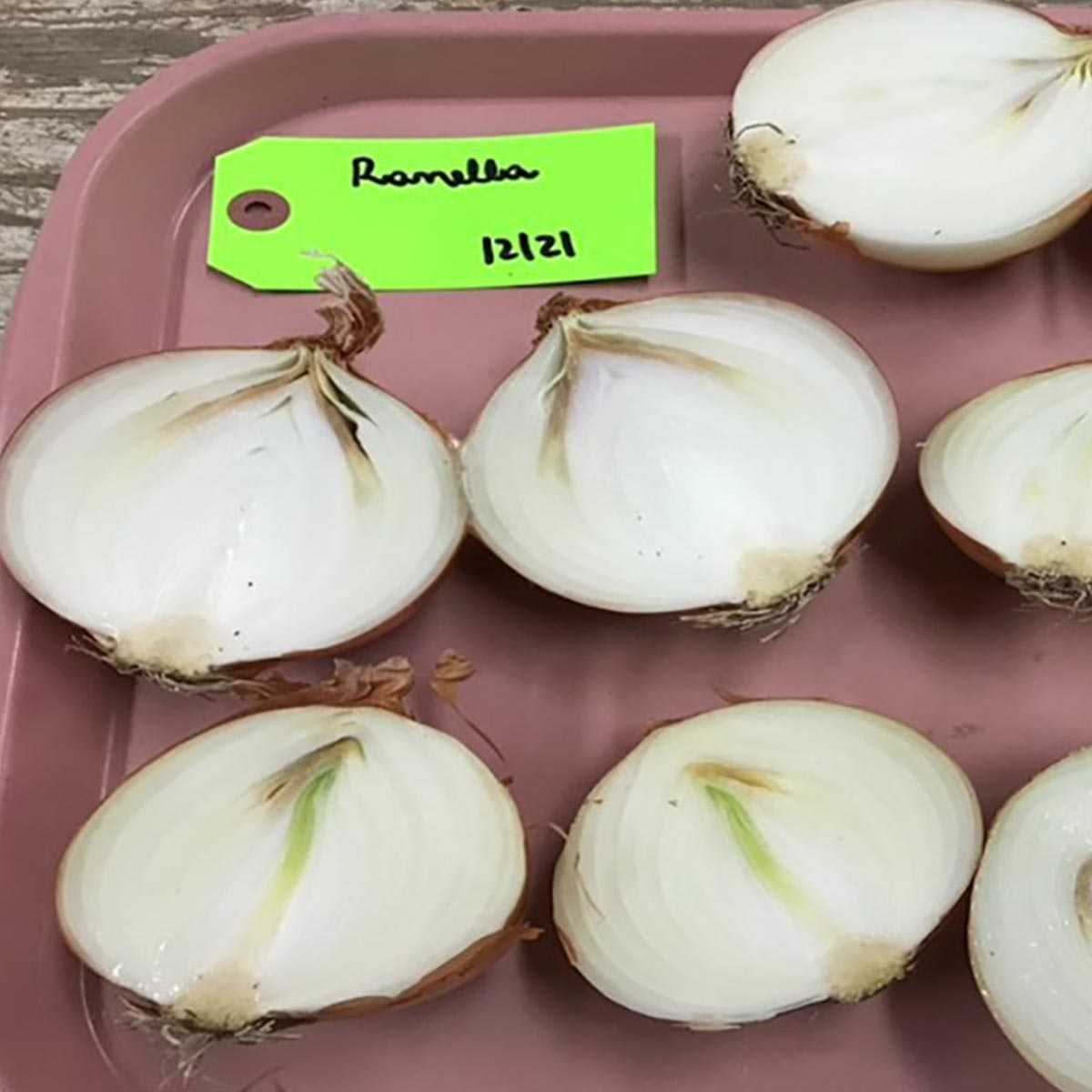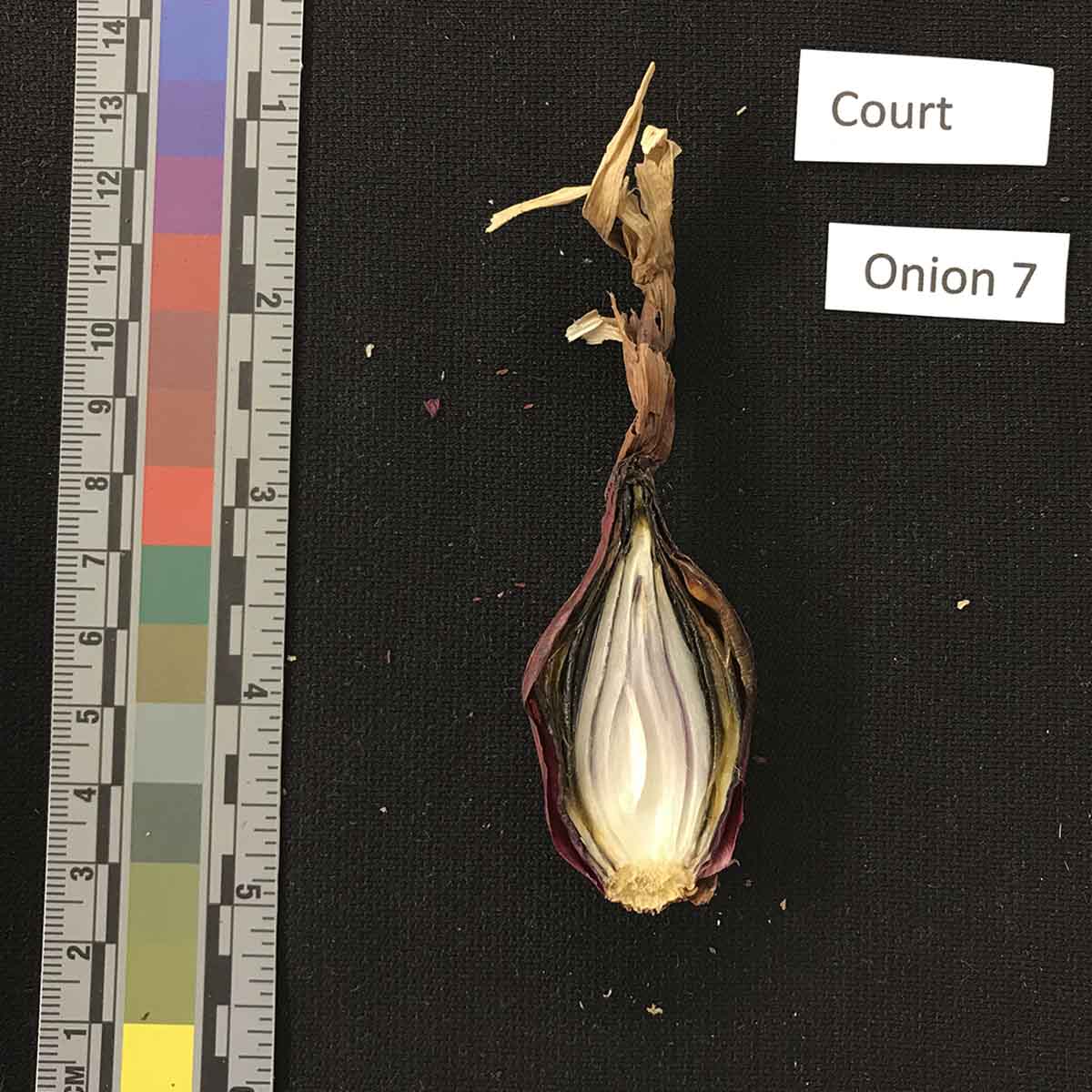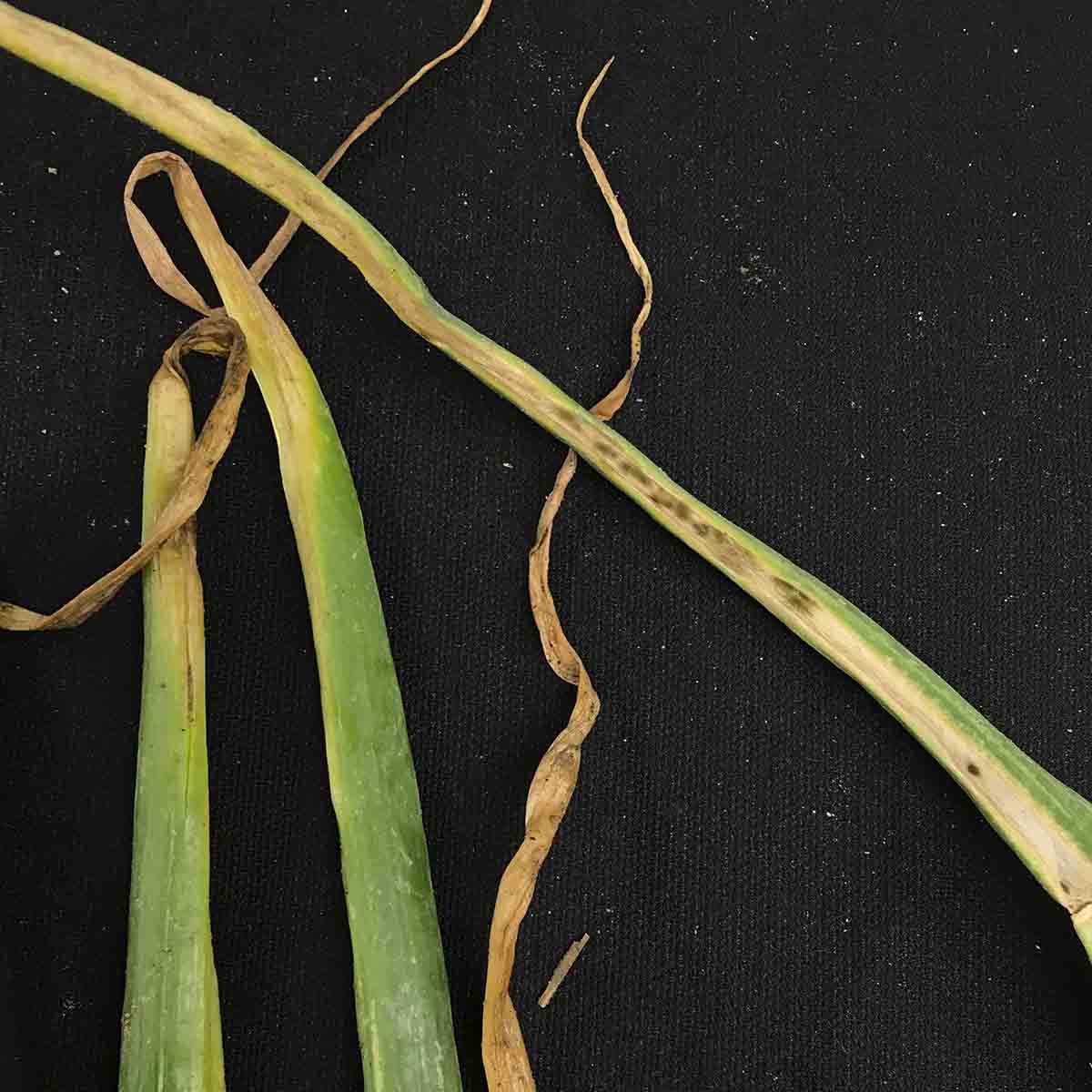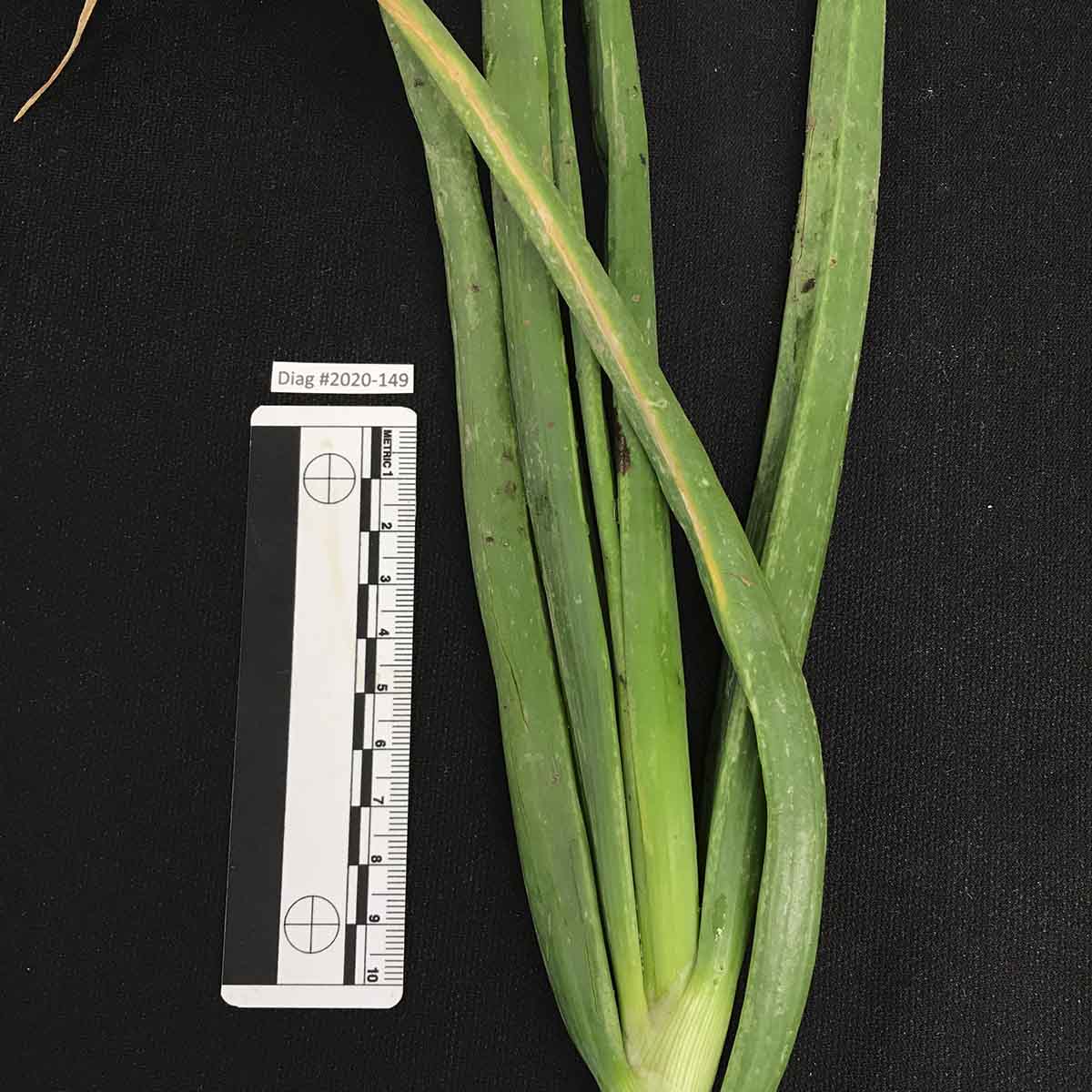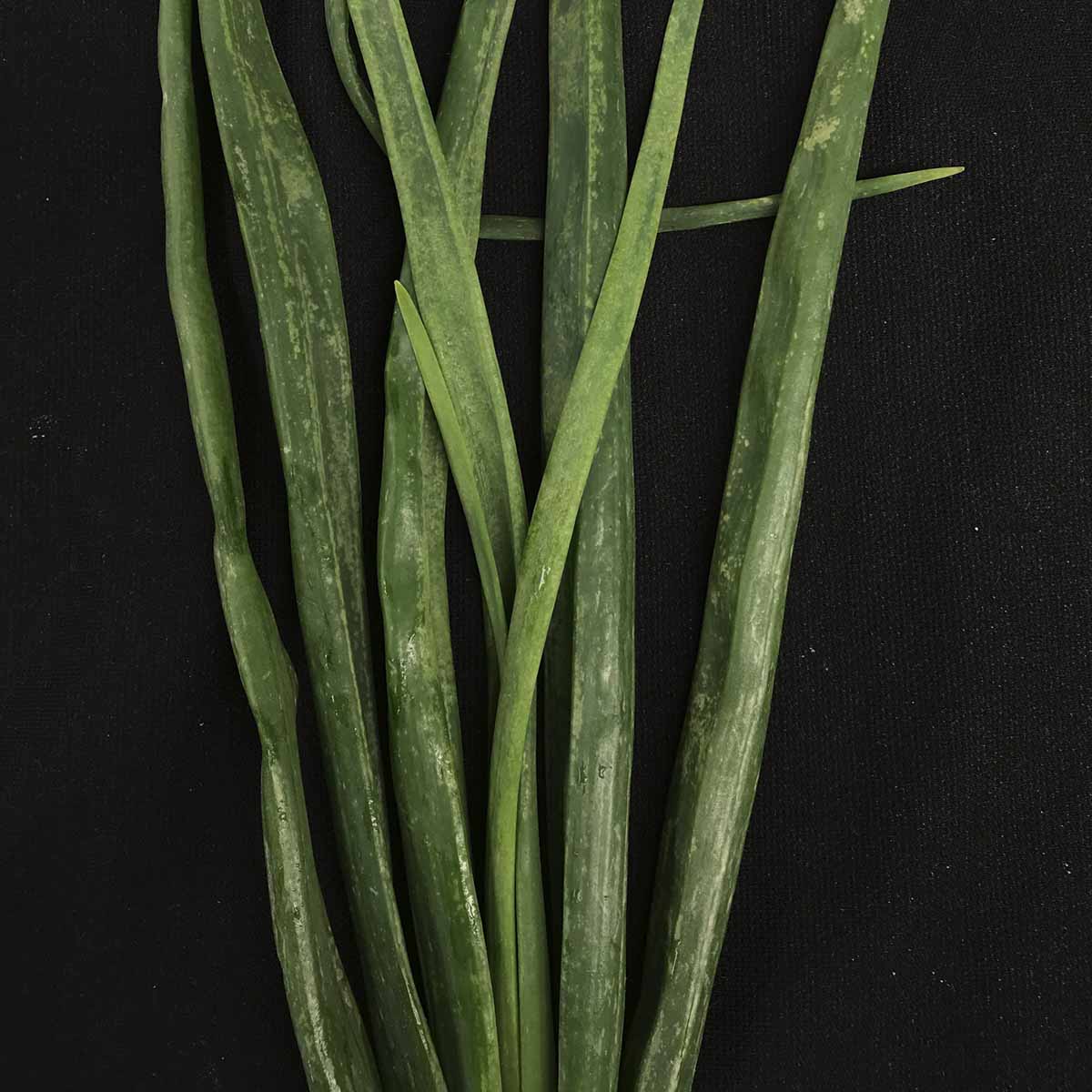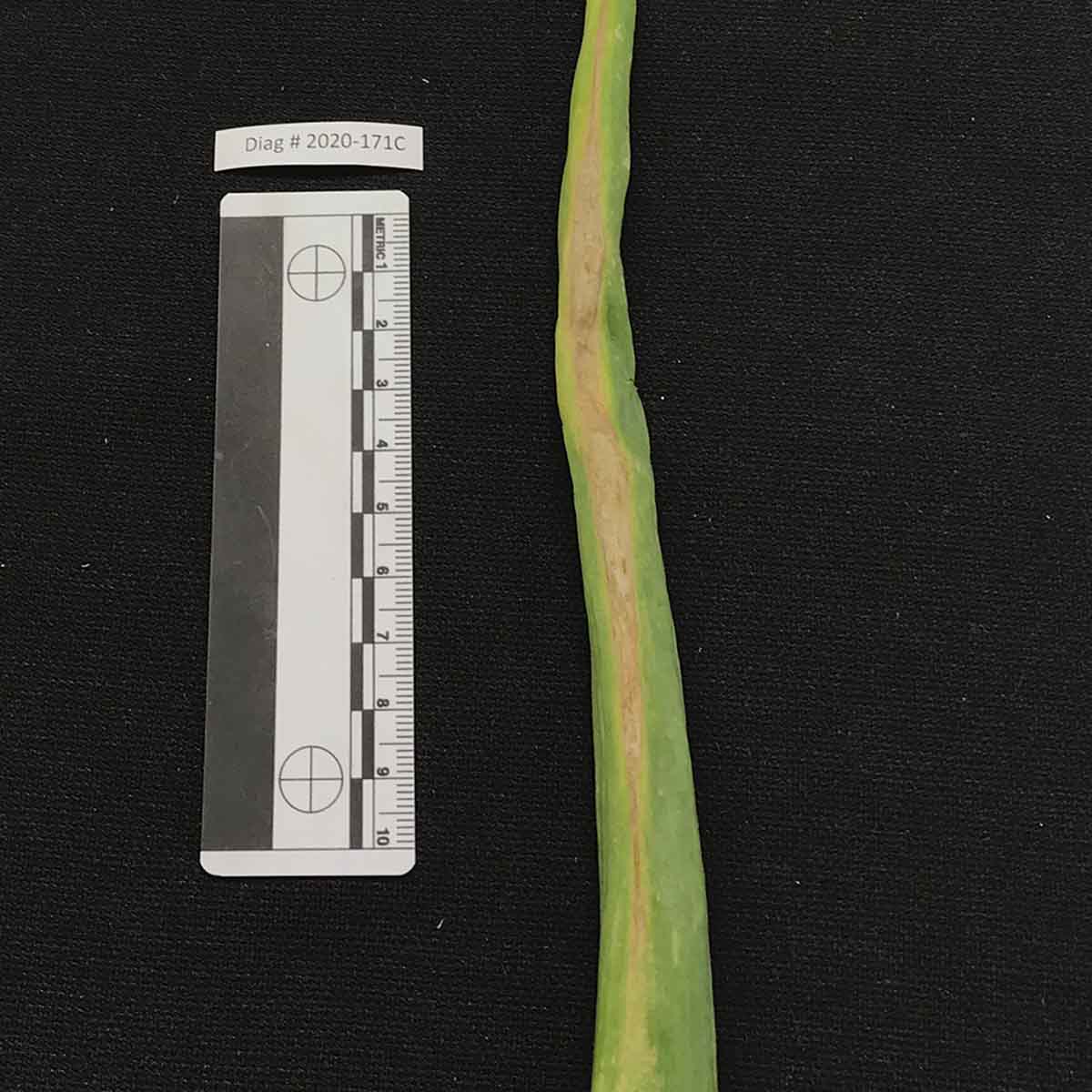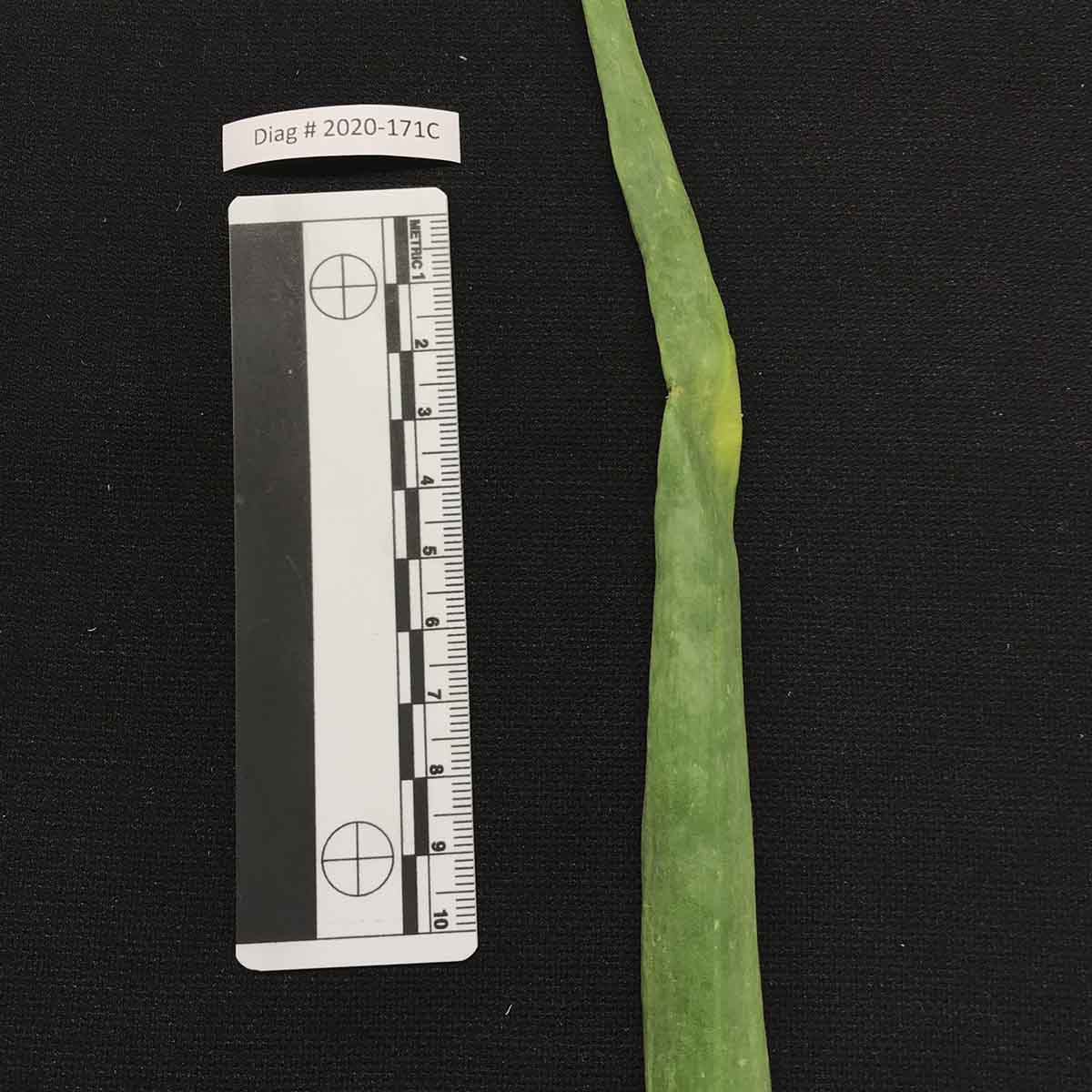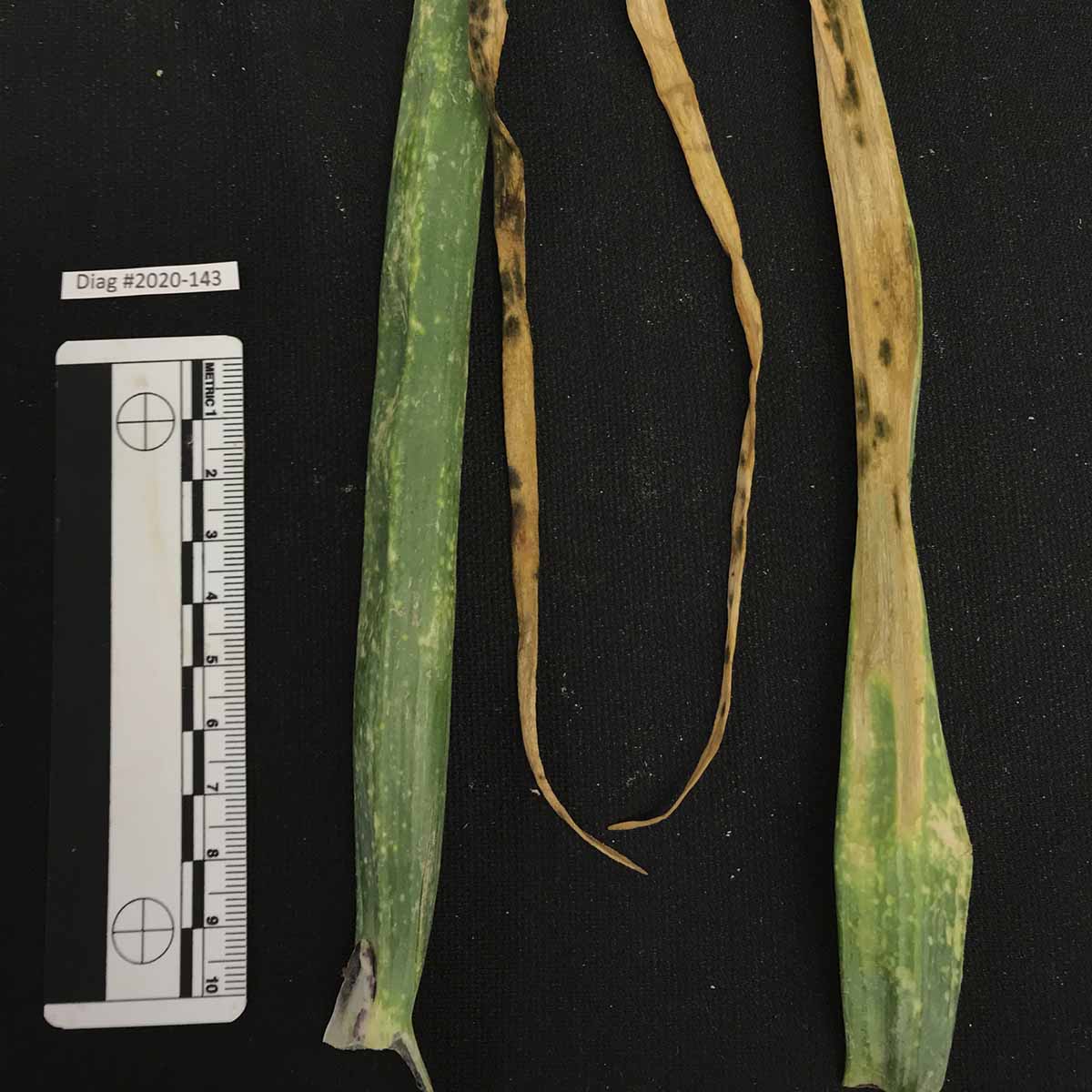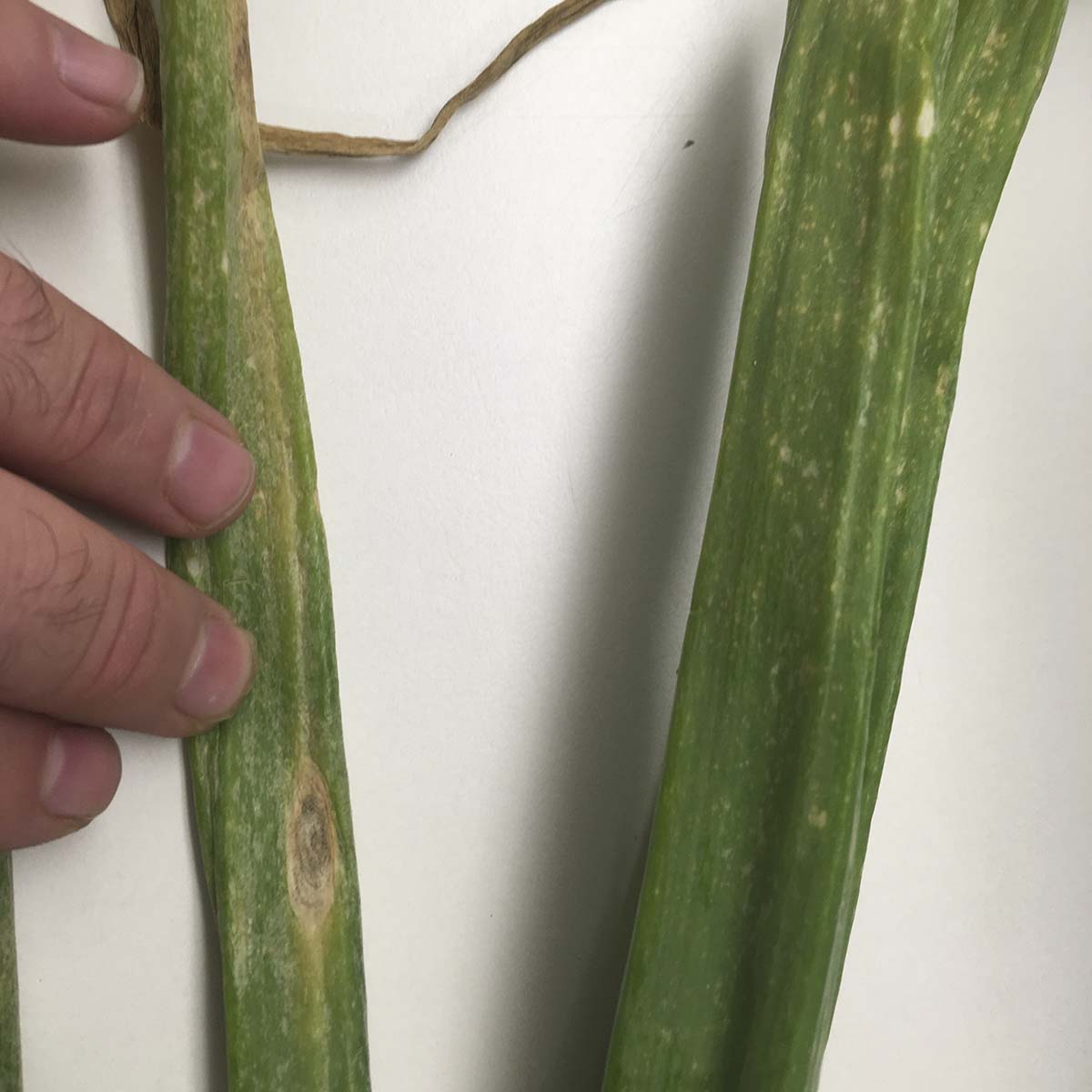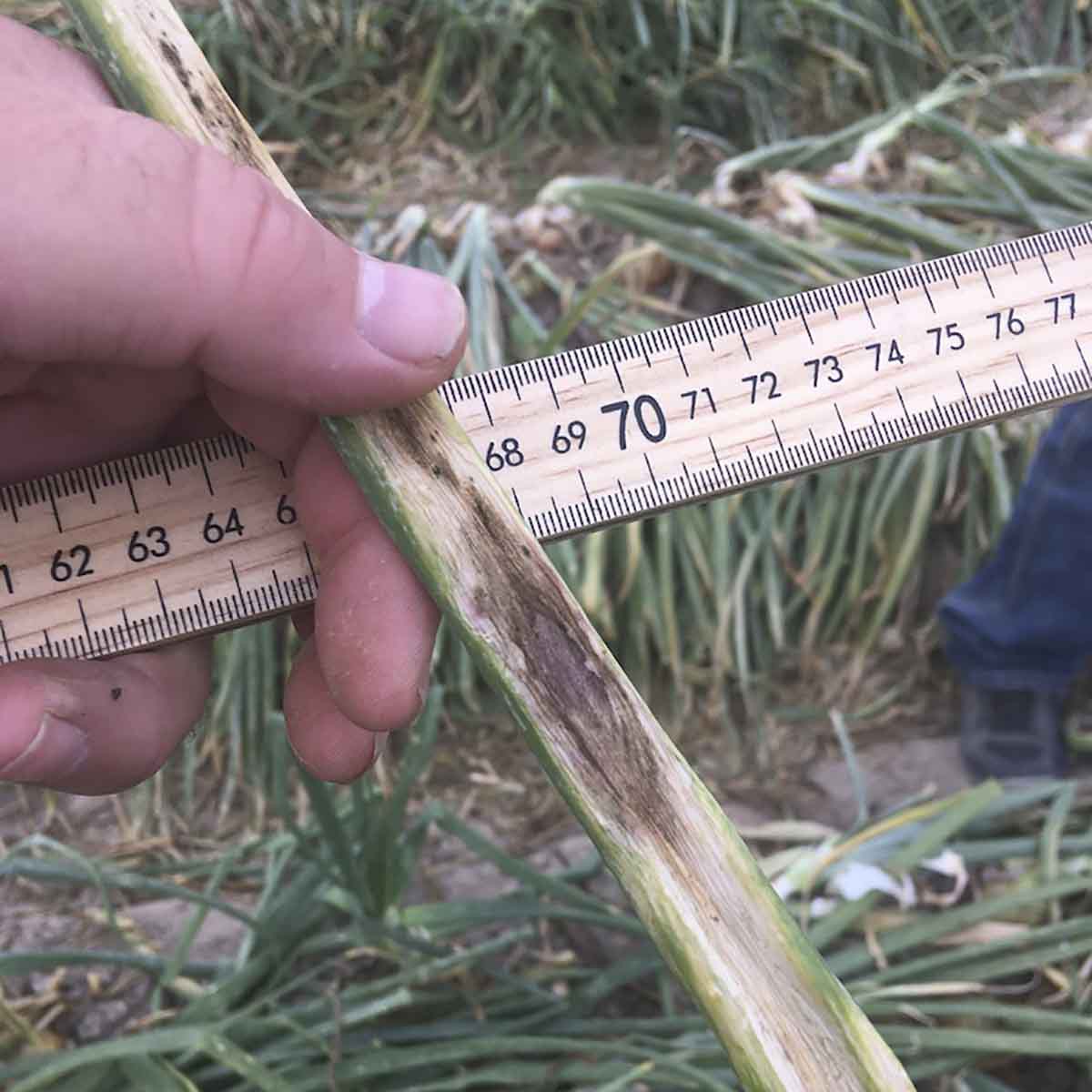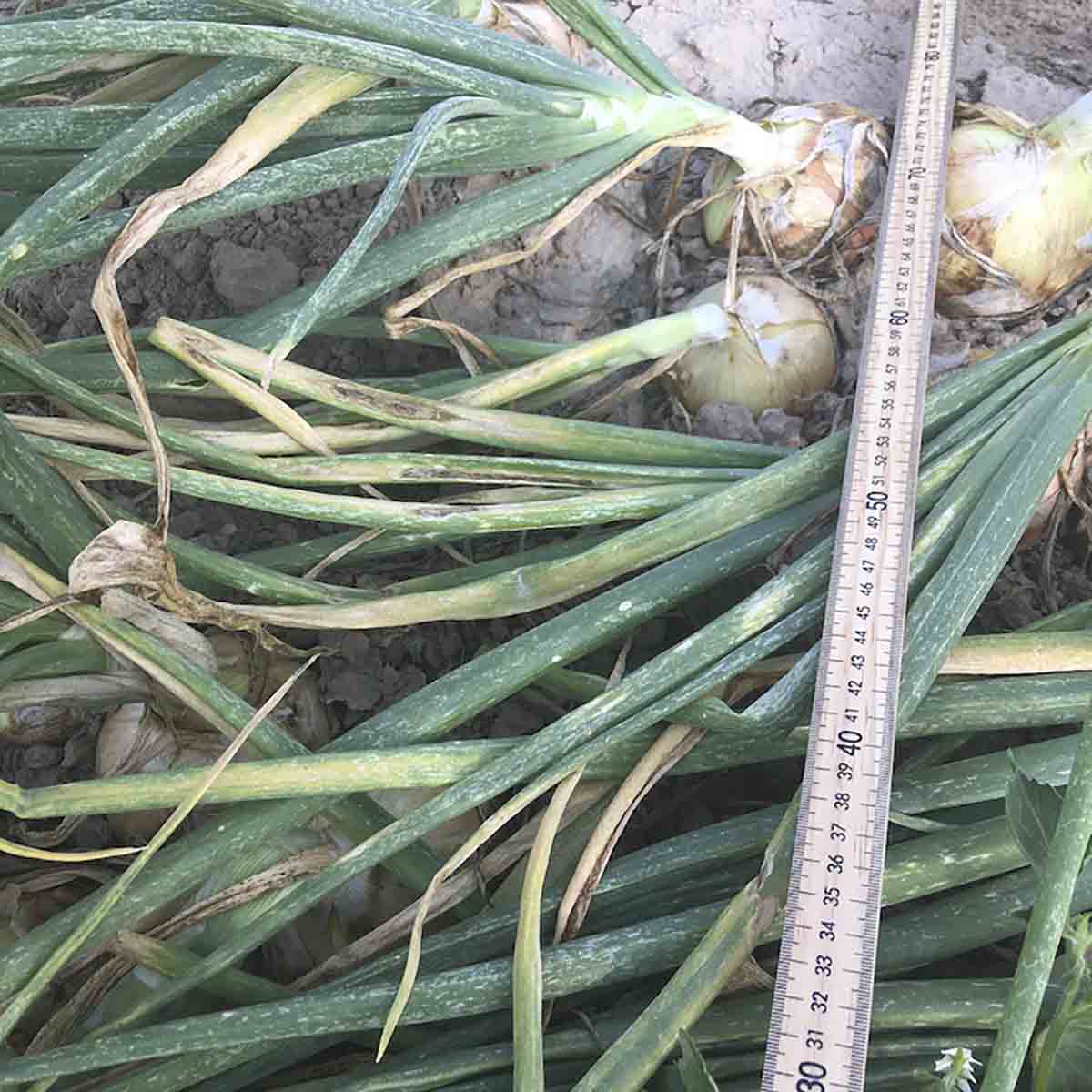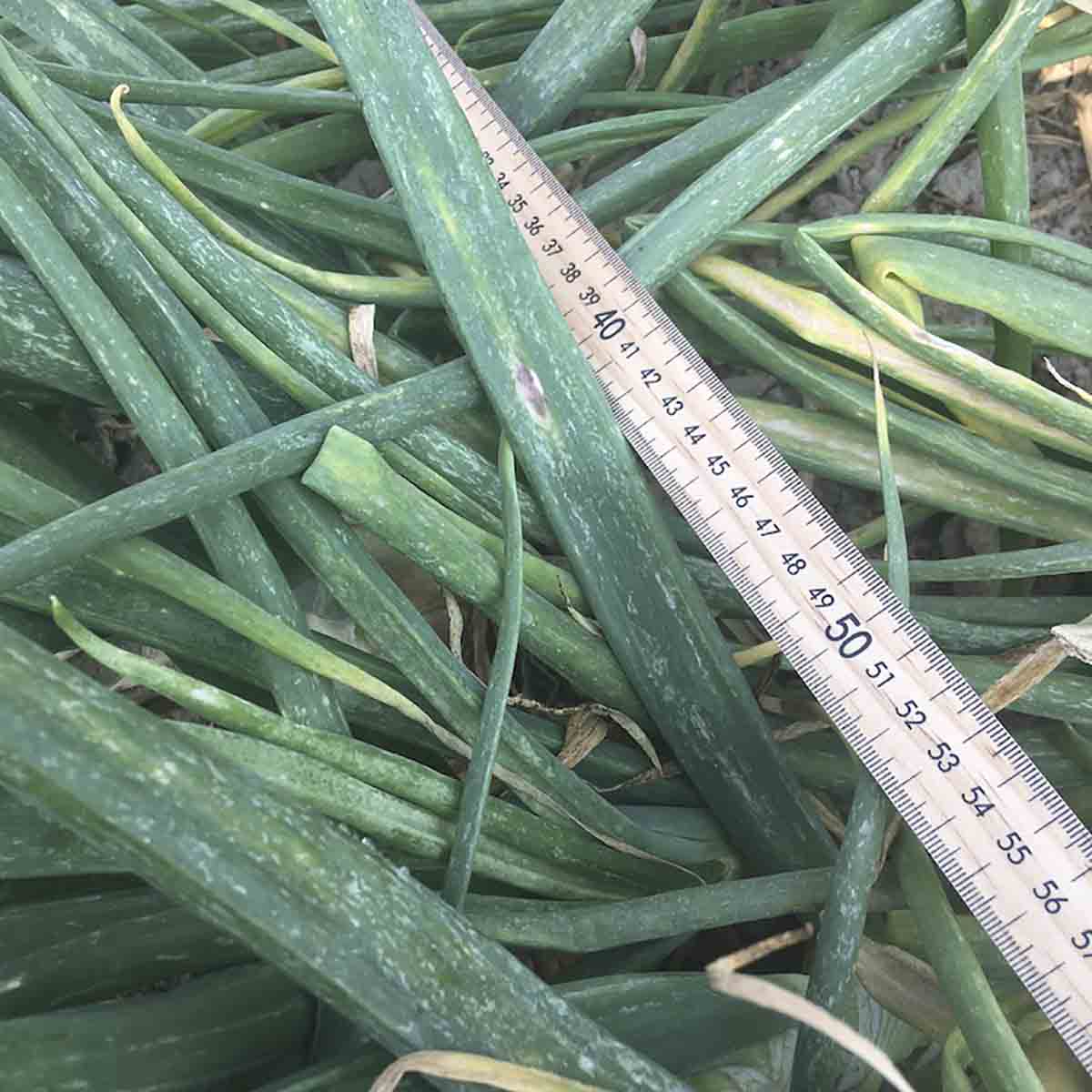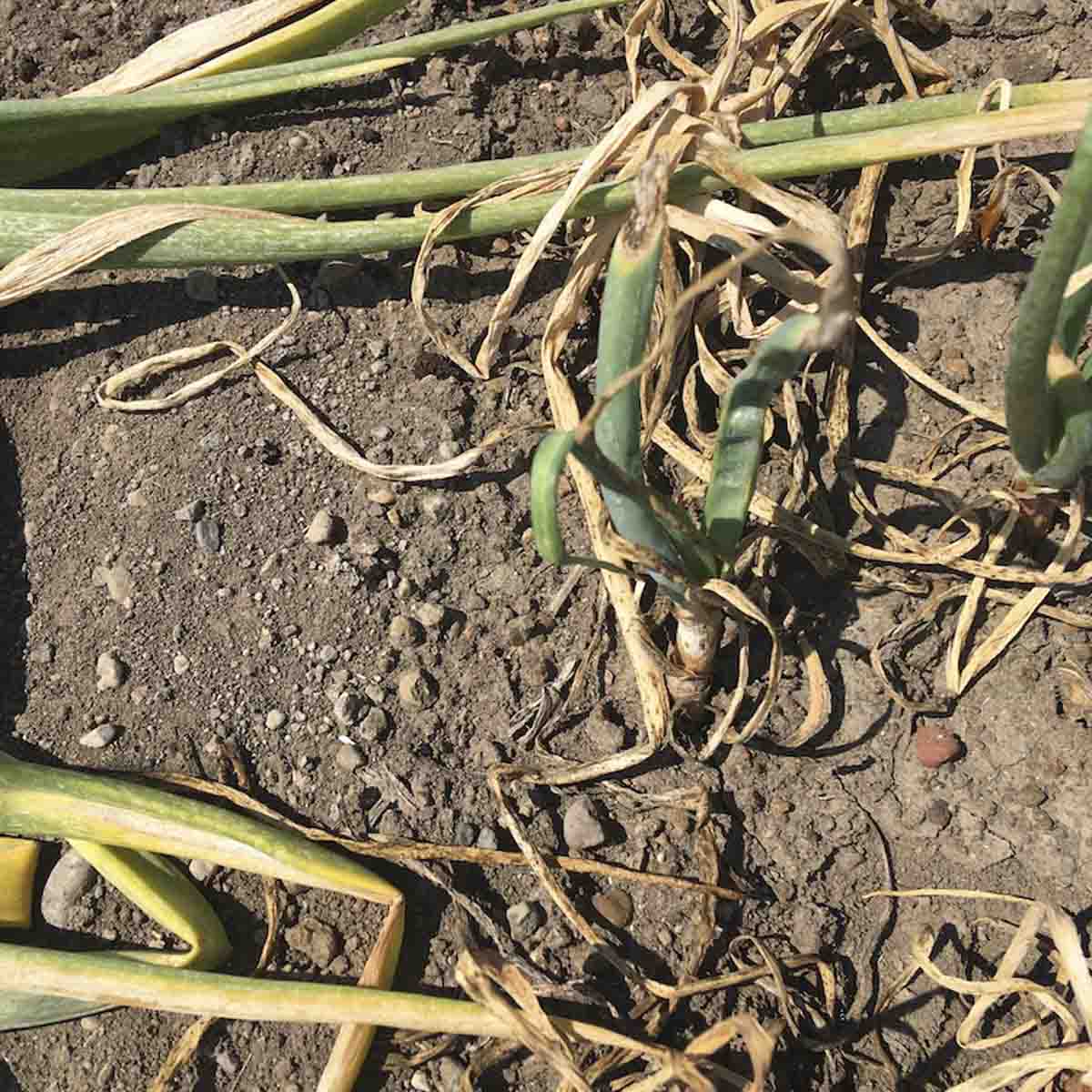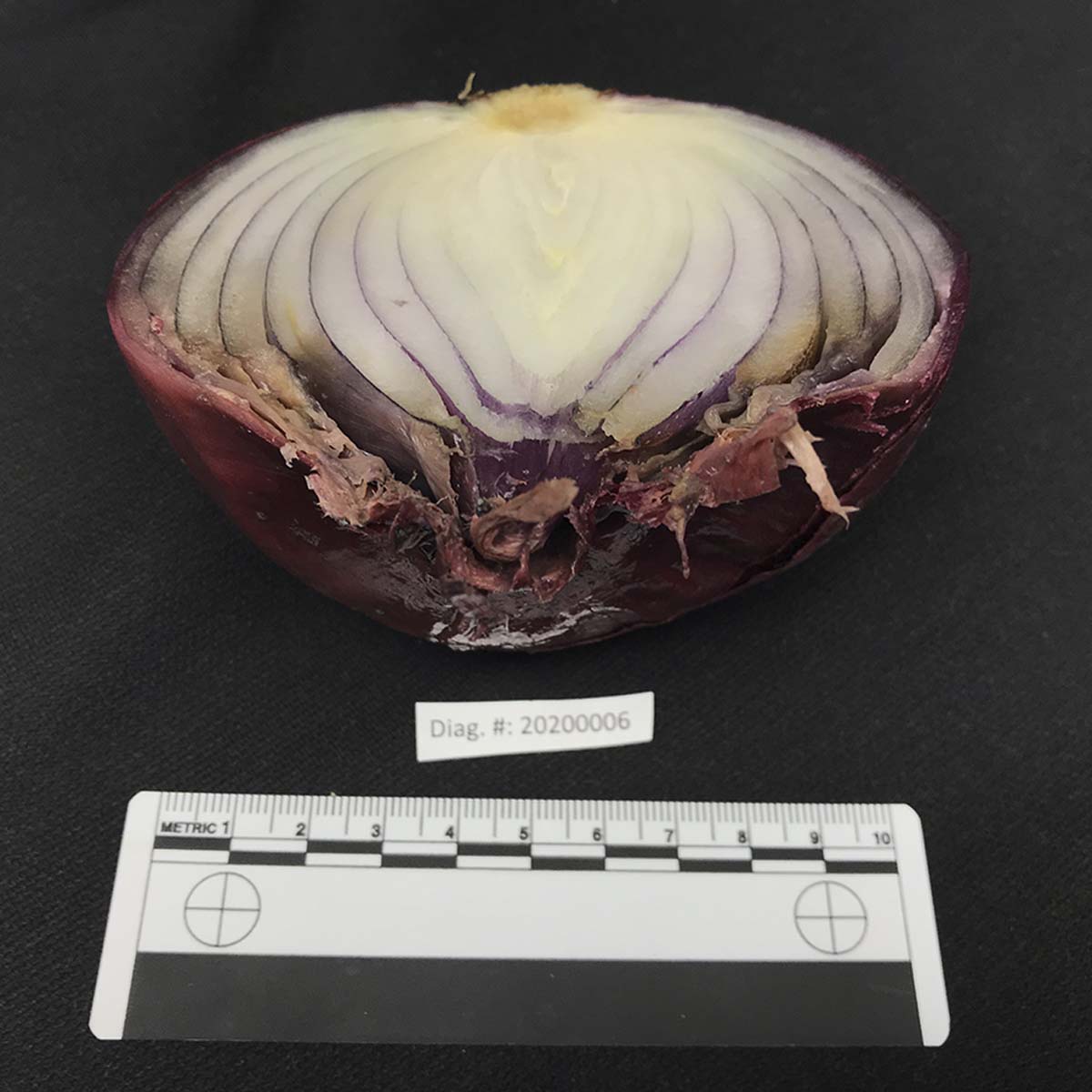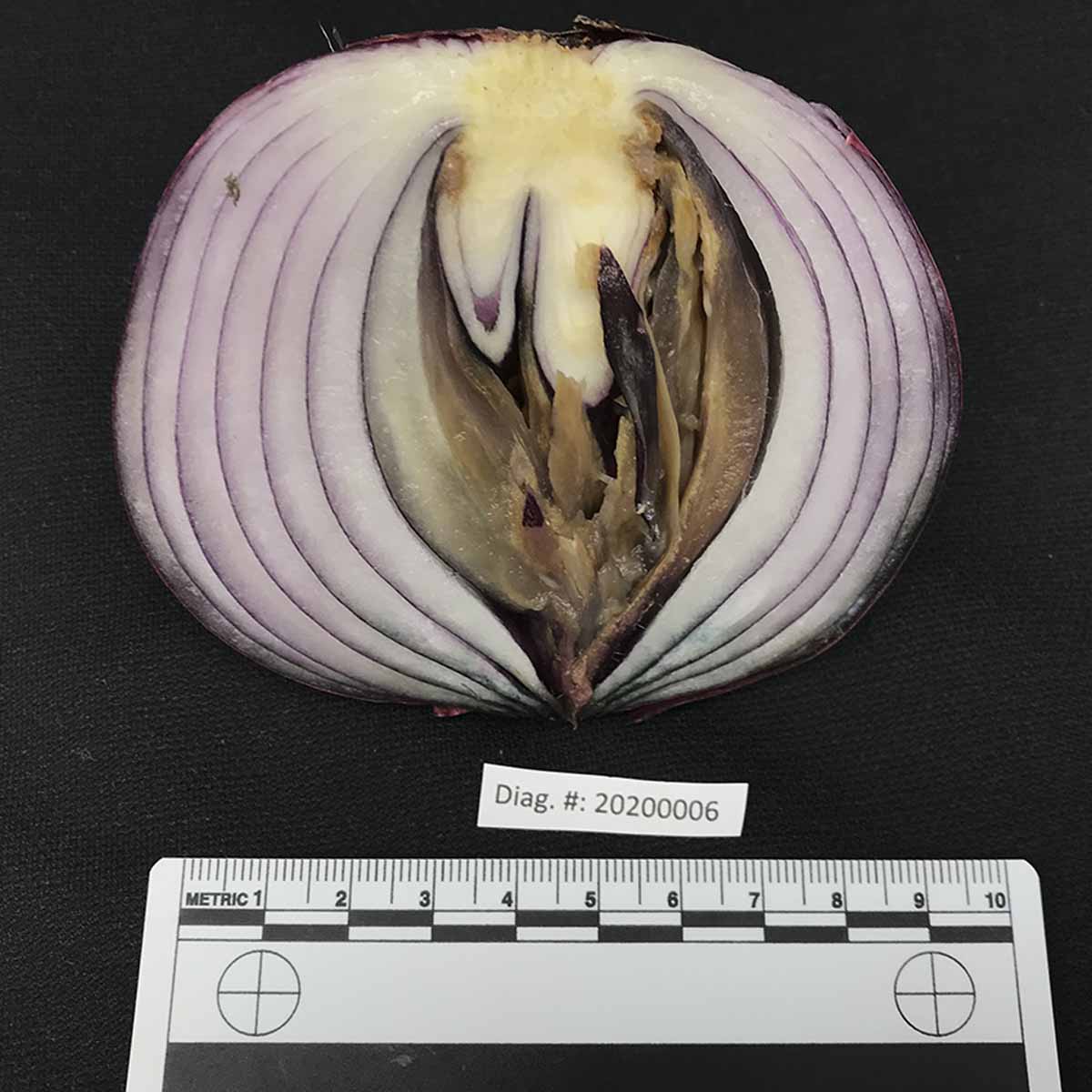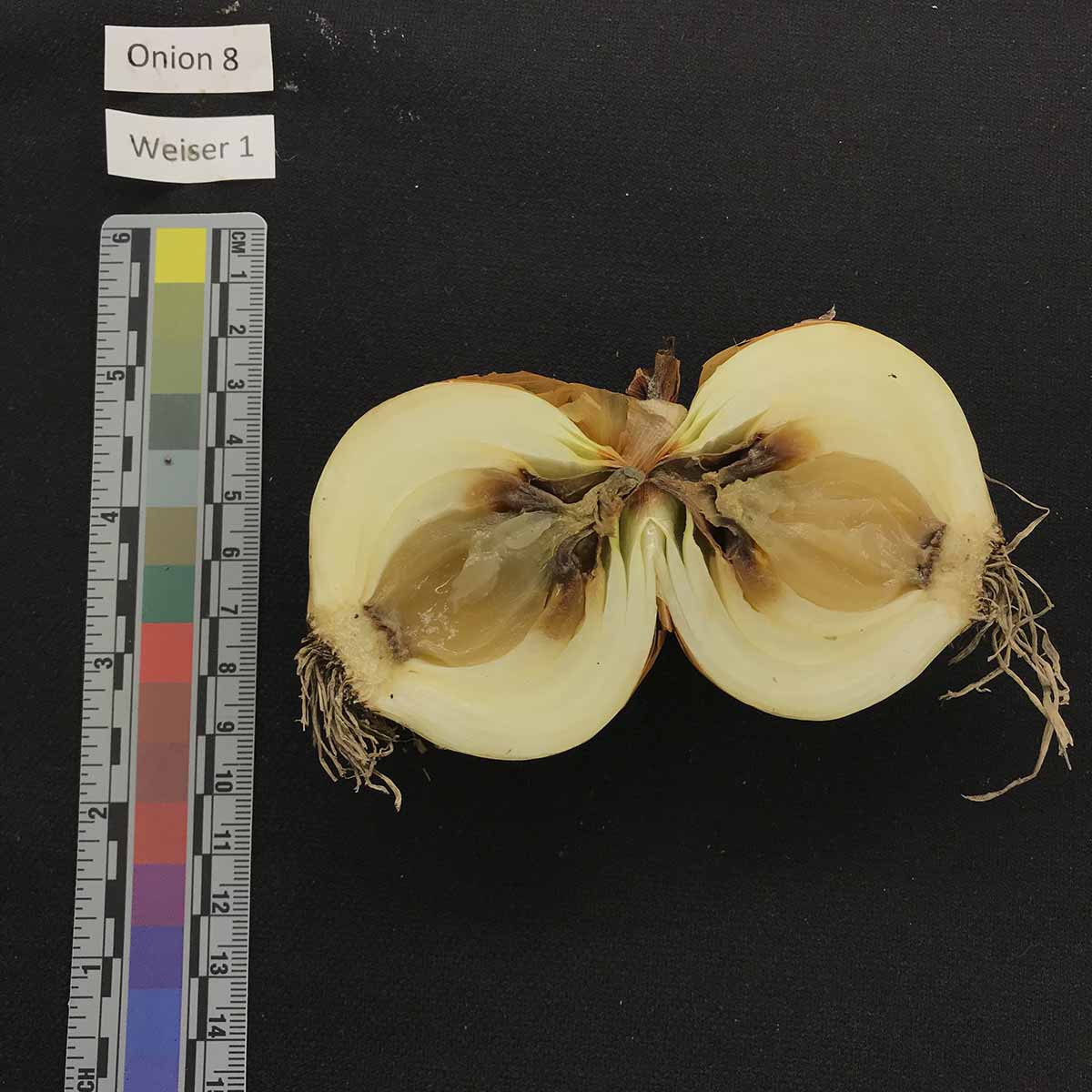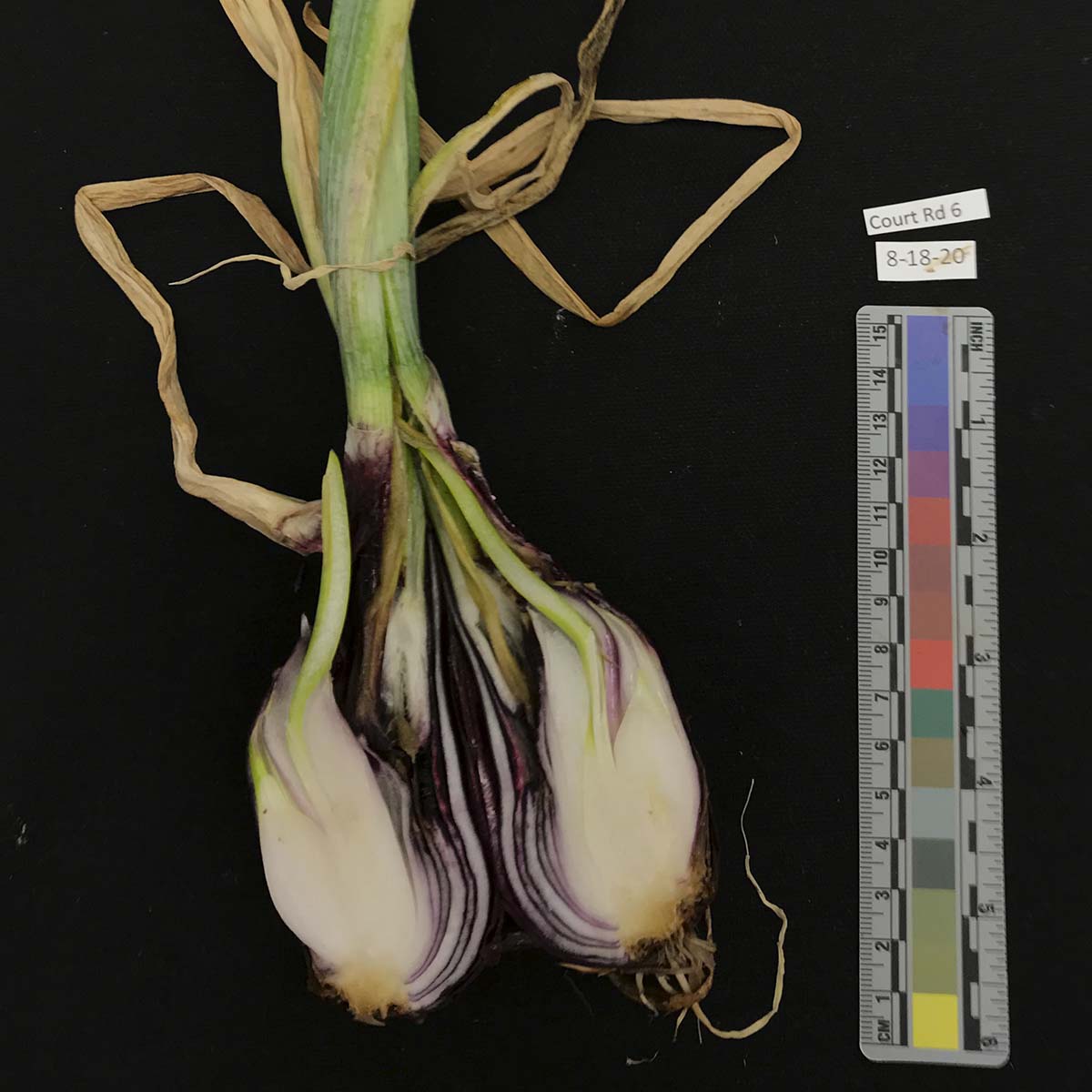Diseases
Onions are an important part of Idaho’s agricultural economy. The Treasure Valley of southwest Idaho and eastern Oregon produces nearly 30% of the nation’s onion crop. While growing conditions are ideal and considerable effort is made to produce high quality onions, diseases can still present in the crop. Below are photos and descriptions of common onion pathogens that lead to production problems.
Onion diseases
Bacterial leaf blight (also referred to as bacterial stalk and leaf necrosis)
Leaf symptoms (naturally infected)
View Profile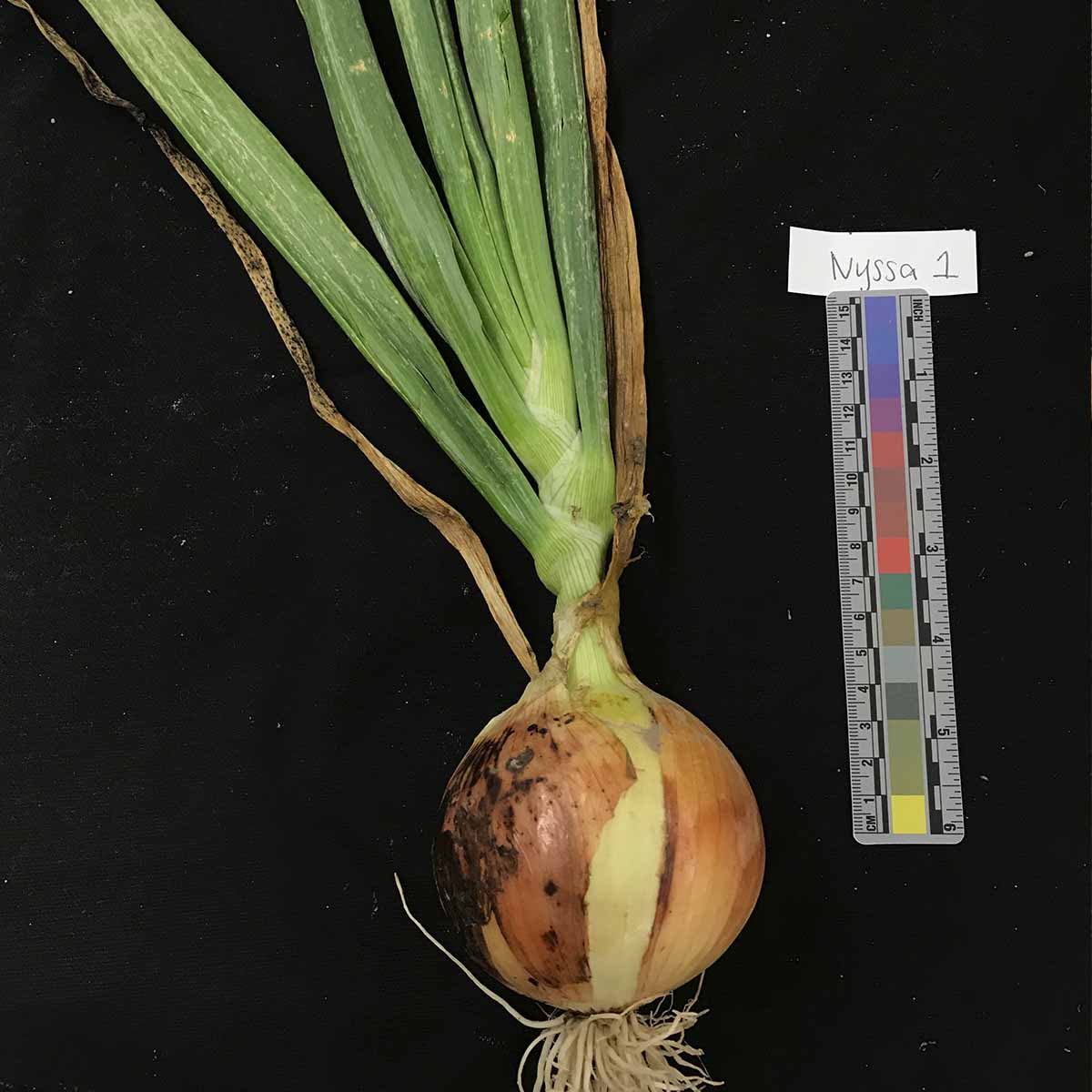
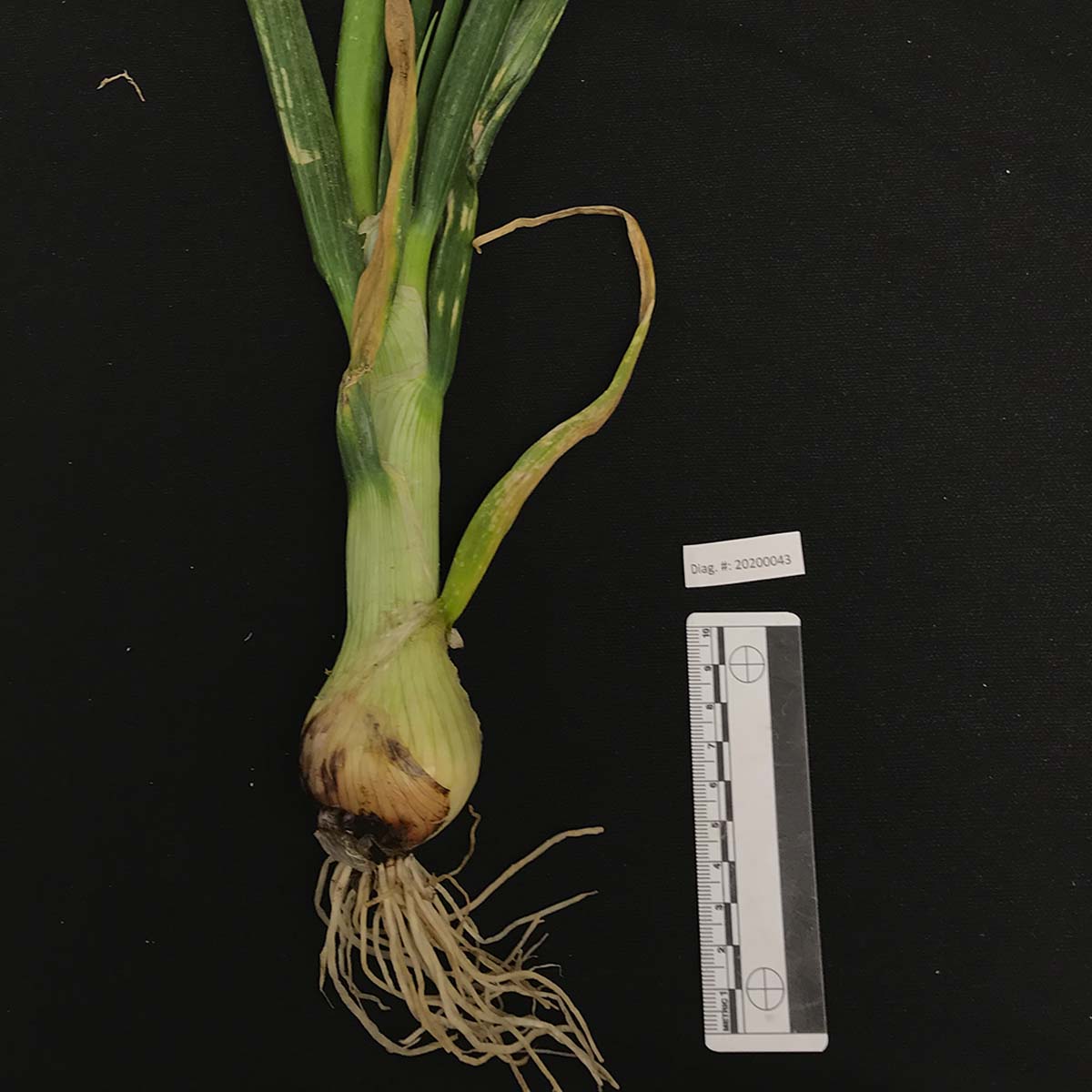
Iris Yellow Spot Virus (IYSV),
Leaf symptoms (naturally infected)
IYSV is spread by thrips. Lesions start out at thrip feeding points. These start as light and dark rings or diamond shaped lesions. These infected areas can grow into each other and girdle the leaves. This ultimately causes the leaves to collapse, brown and die.
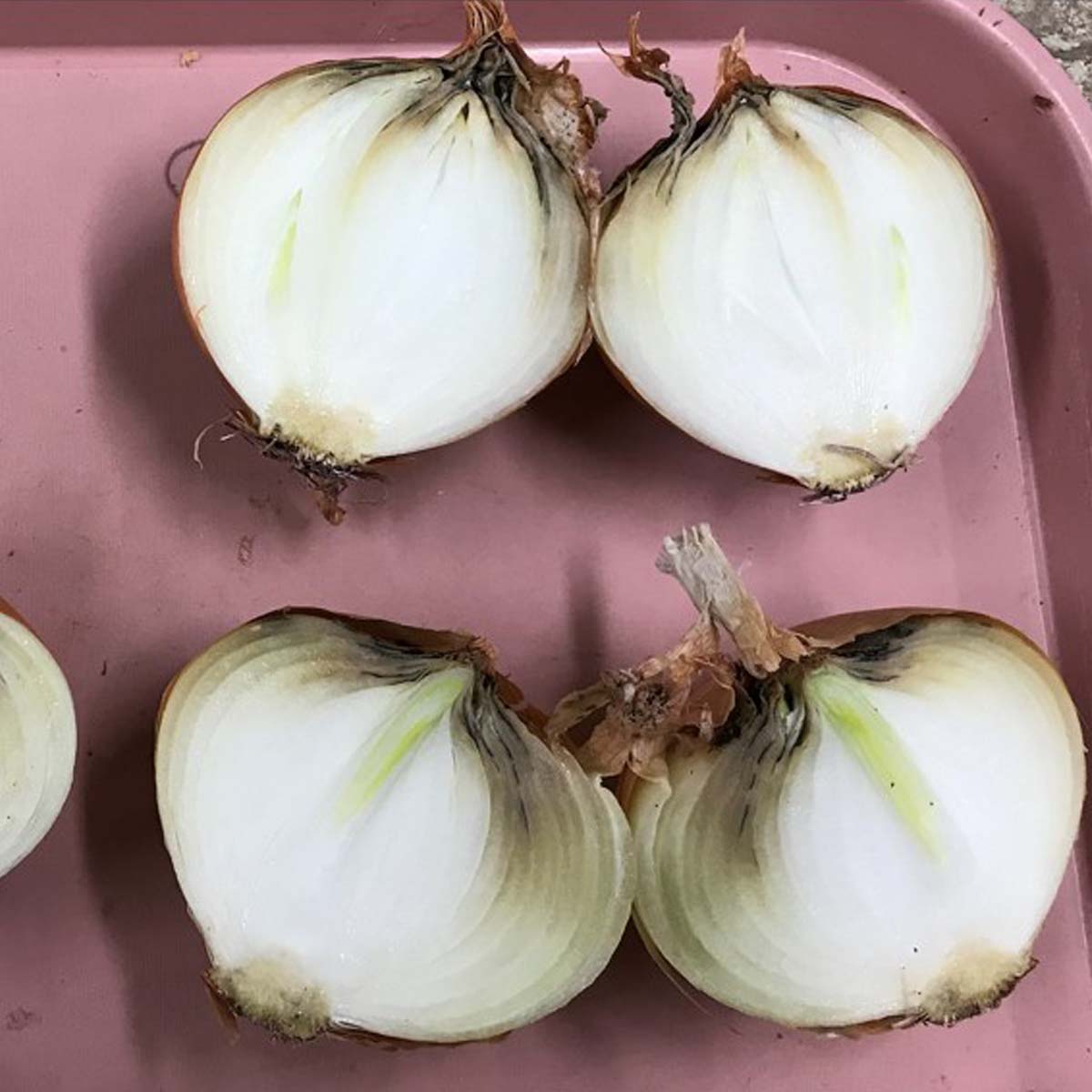
Neck rot,
Bulb symptoms (inoculated)
Botrytis allii causes neck rot in onions. This occurs most obviously in storage. The disease presents initially as water-soaked, yellowed scale discoloration that moves down from the neck. Grey mold forms between the scales as they break down, later leading to black sclerotia. An associated strain, Botrytis aclada, can also cause onion neck rot. Symptoms caused by Botrytis aclada are not pictured here.
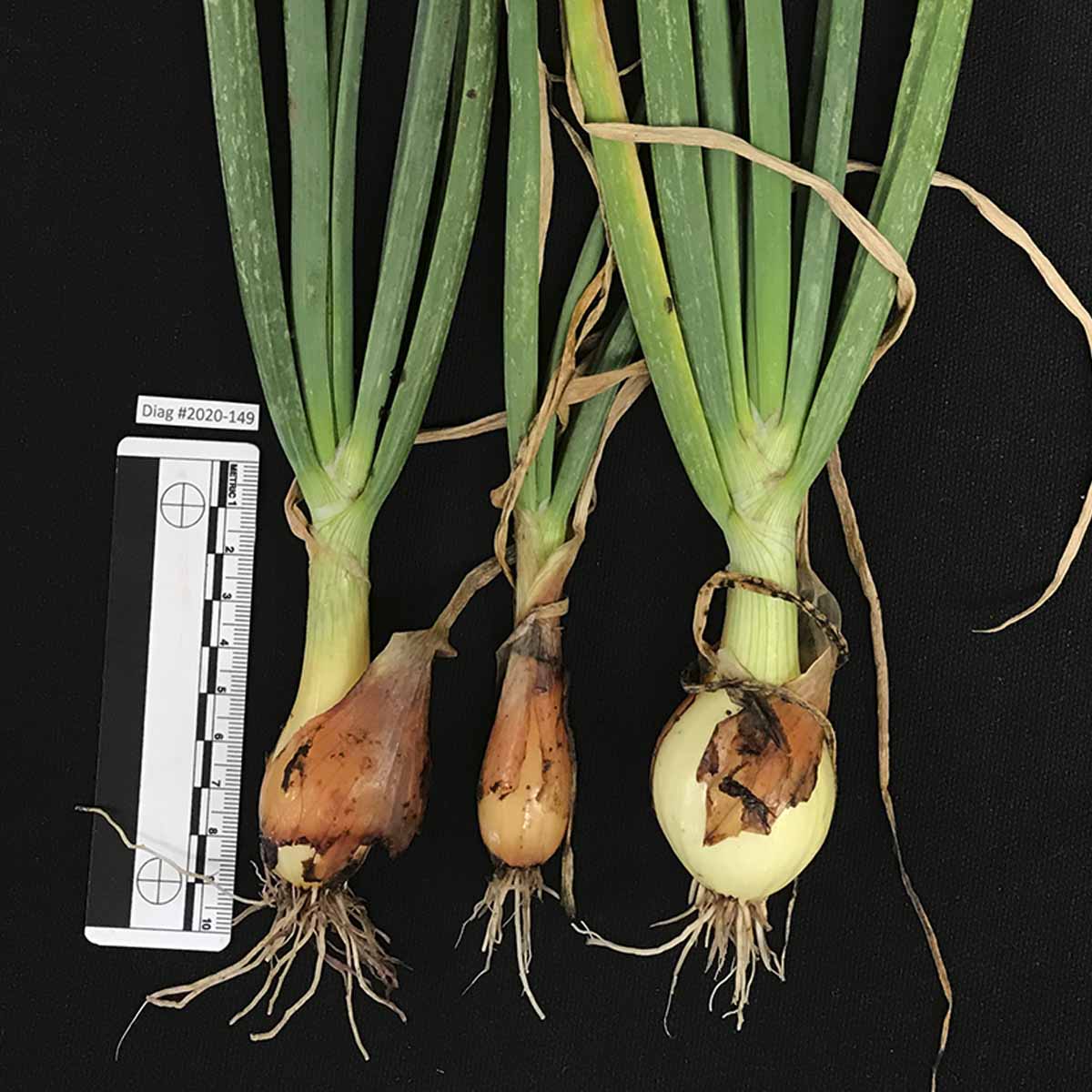
Pantoea agglomerans,
Bulb skin symptoms (naturally infected)
Pantoea agglomerans is a bacterial pathogen that causes bulb rot and leaf blight in onions. When present in the bulb, this bacteria typically causes the inner scales to turn a watery yellow to brown color. Another symptom of this pathogen are water-soaked lesions.
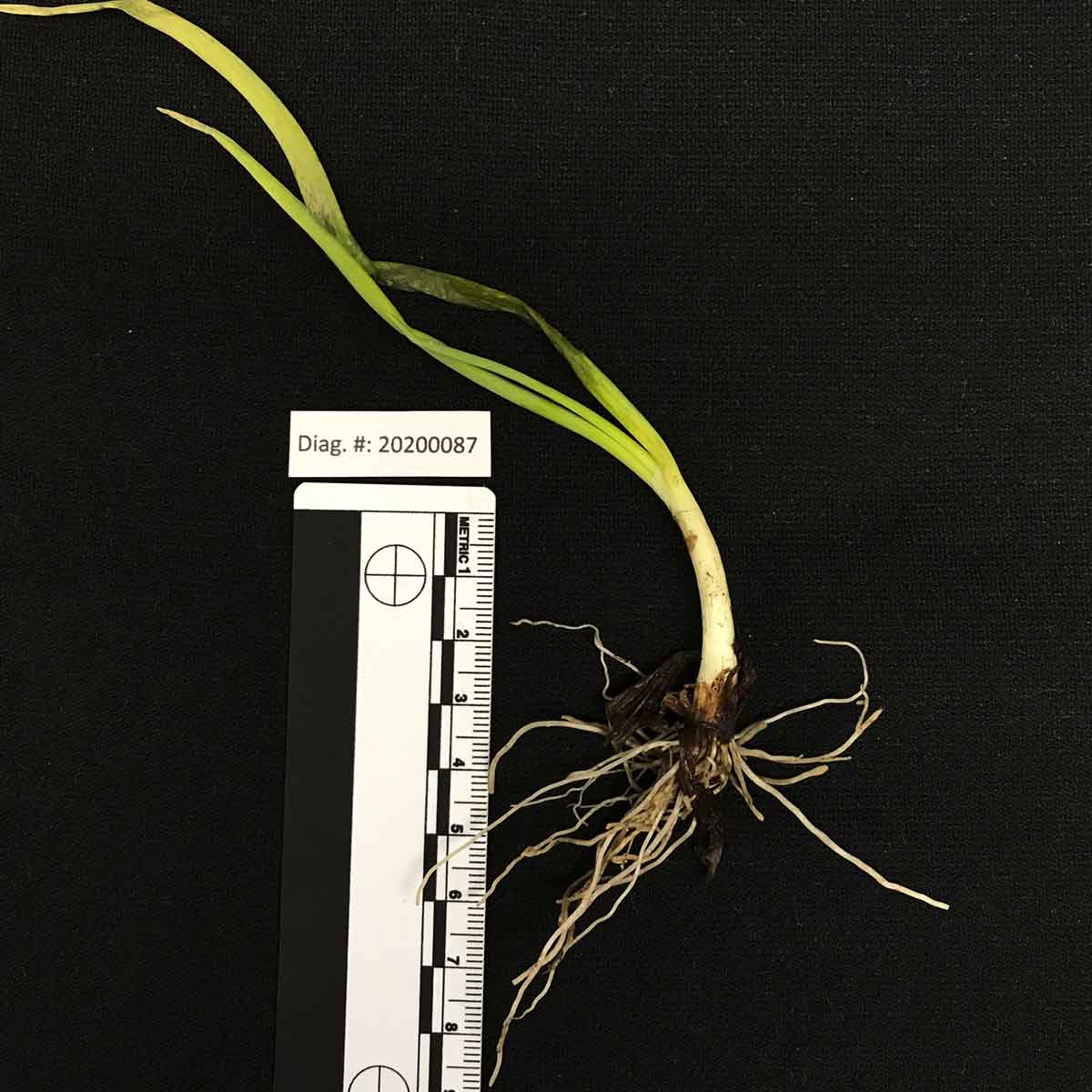
Pythium intermedium,
Bulb symptoms (naturally infected)
Pythium intermedium causes damping off and root rots in onions. Symptoms are water-soaked lesions on the roots and lower scales. Roots and older scales on seedlings may turn black. Older plants can exhibit stunting, yellowing and wilting of leaves.
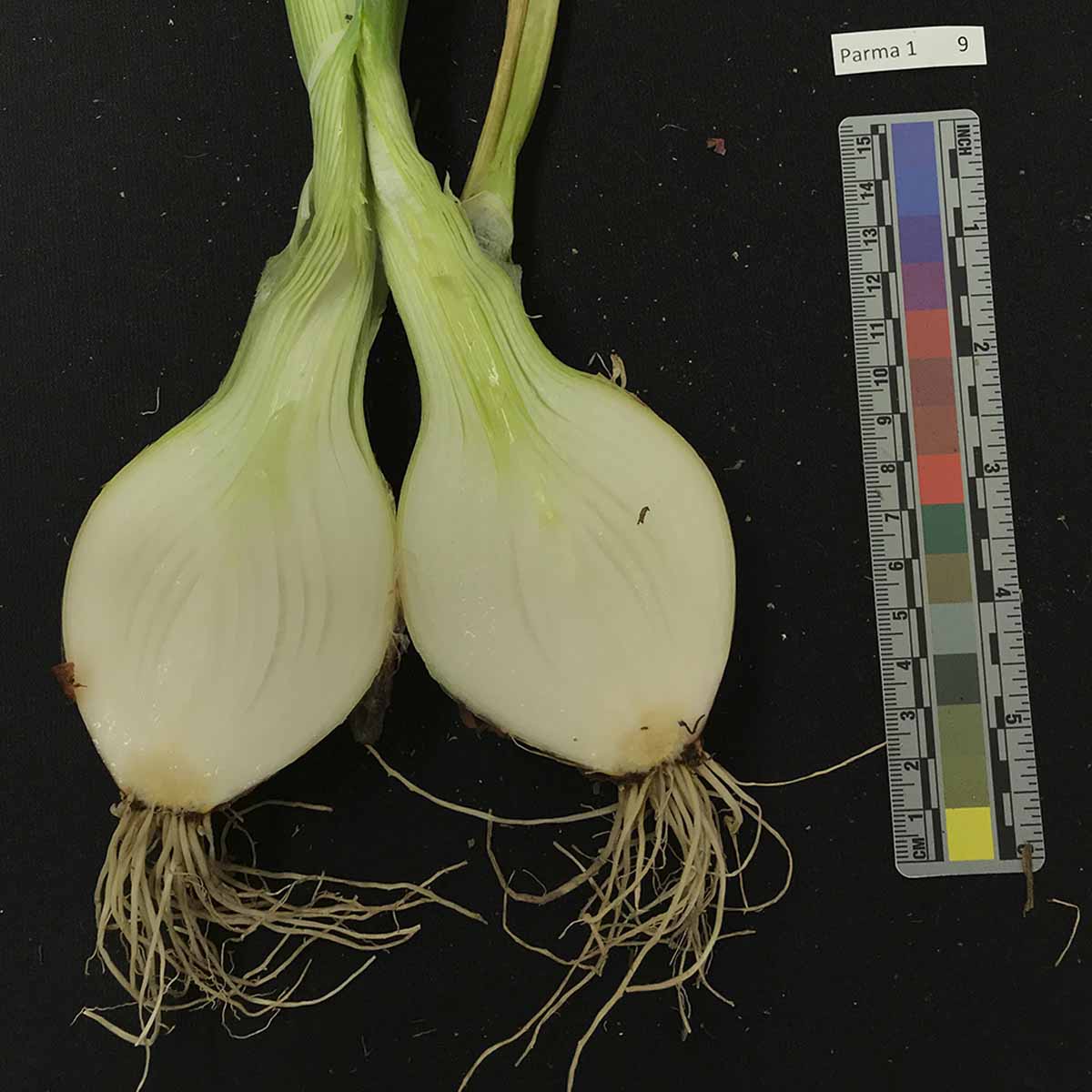
Soft rot,
Bulb symptoms (naturally infected)
Enterobacter bulb decay forms after onions have been stored. The symptoms can appear as water-soaked scales (initial photo). Symptoms also present as light brown to dark brown scales. Enterobacter spp. can also cause scales to shrink or collapse (bottom photo).
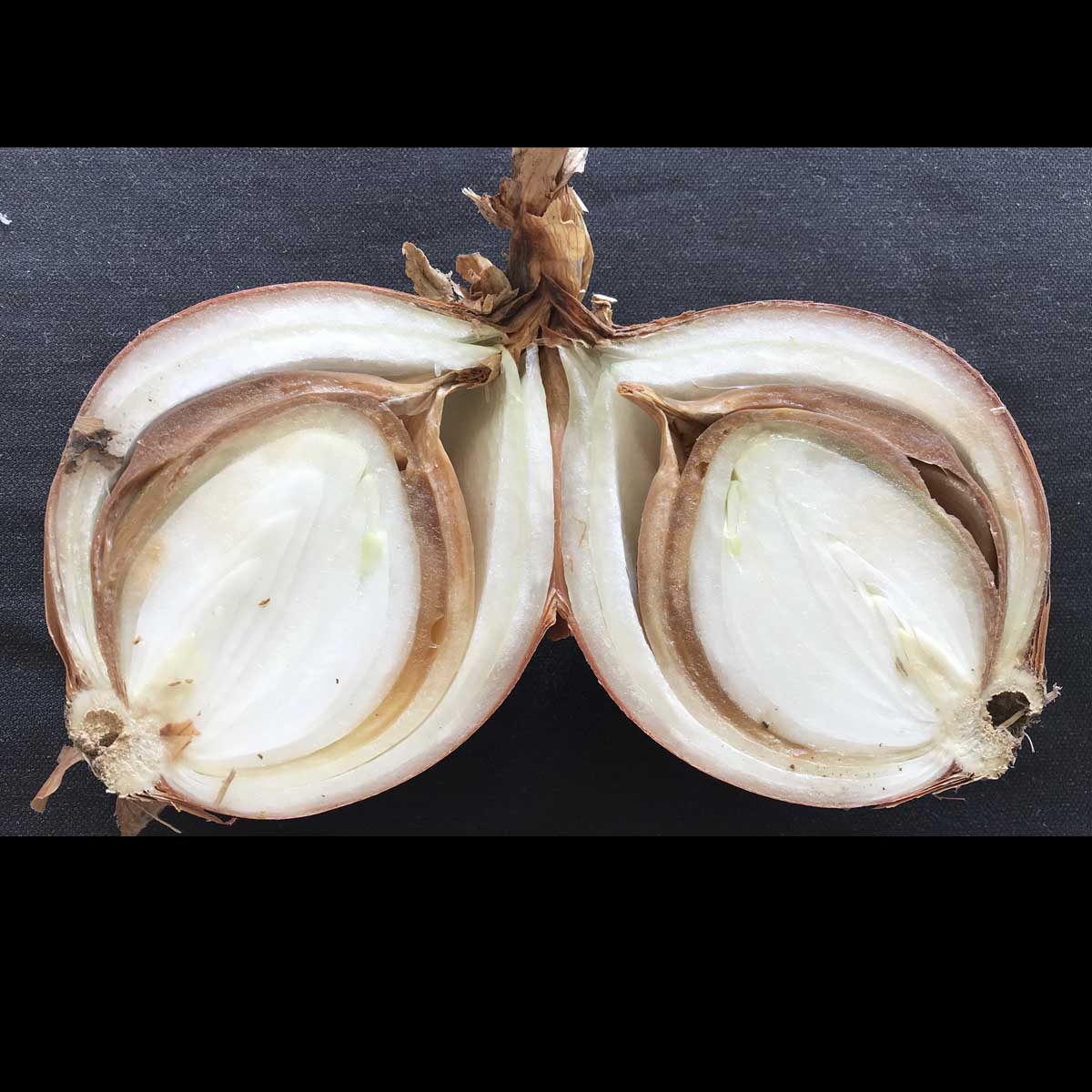
Soft rot,
Bulb symptoms (naturally infected)
Rahnella sp. is an onion associated bacteria. It can cause soft rot in bulbs. Scales of infected bulbs begin showing symptoms of watery and/or yellow discoloration. This progresses into brown to dark brown discoloration and collapsed or shrunken scales. The very rotten bulb may be affected by multiple pathogens, not only Rahnella spp.
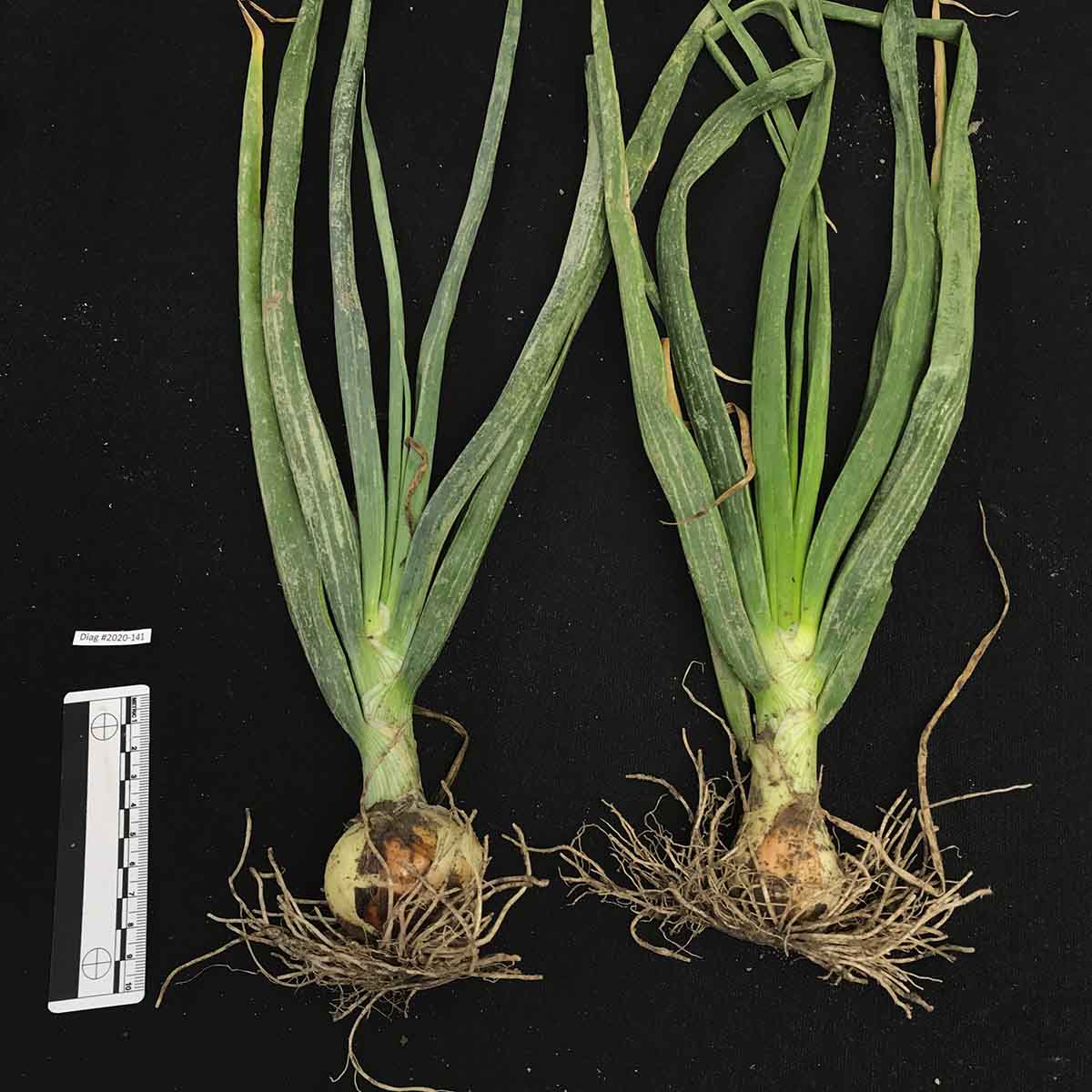
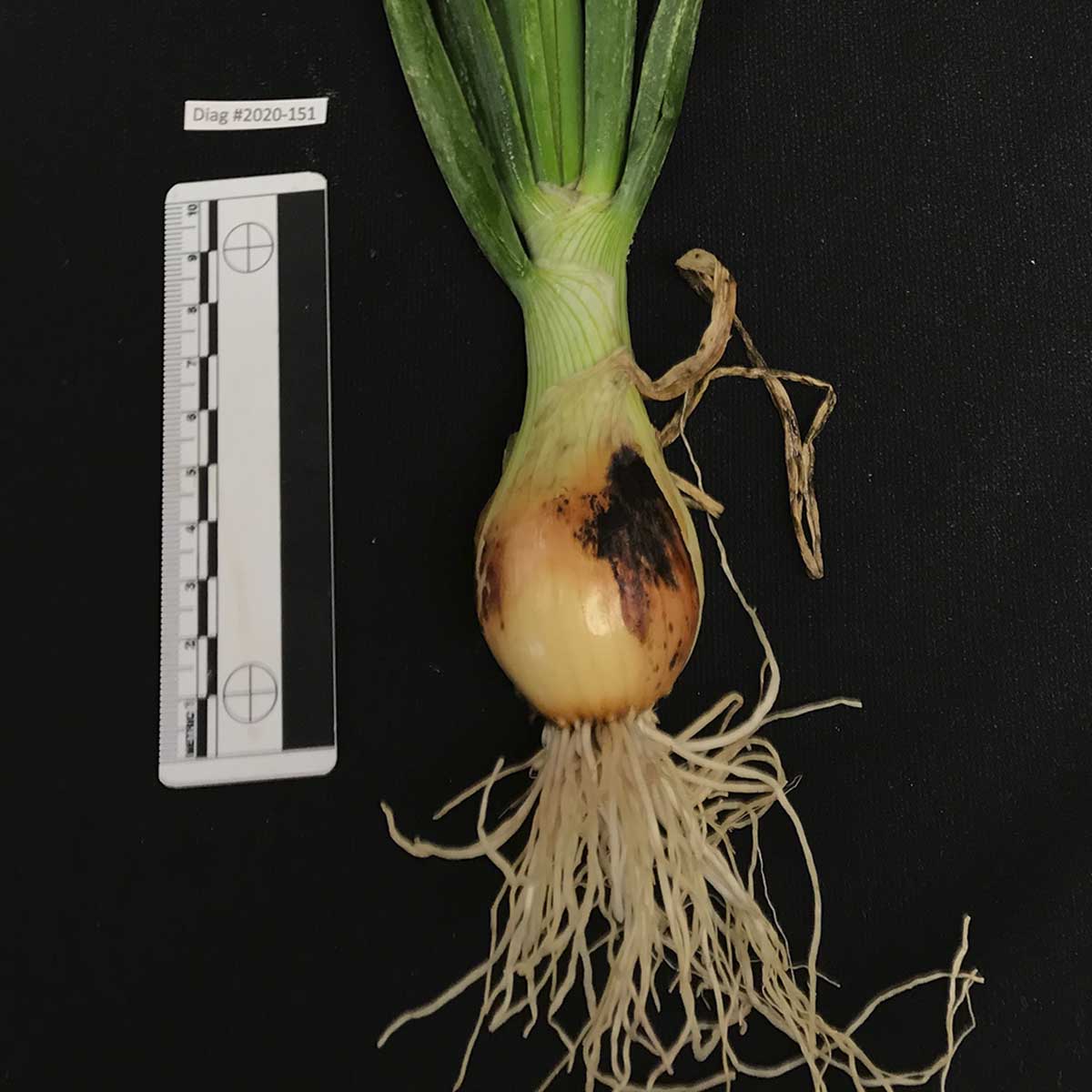
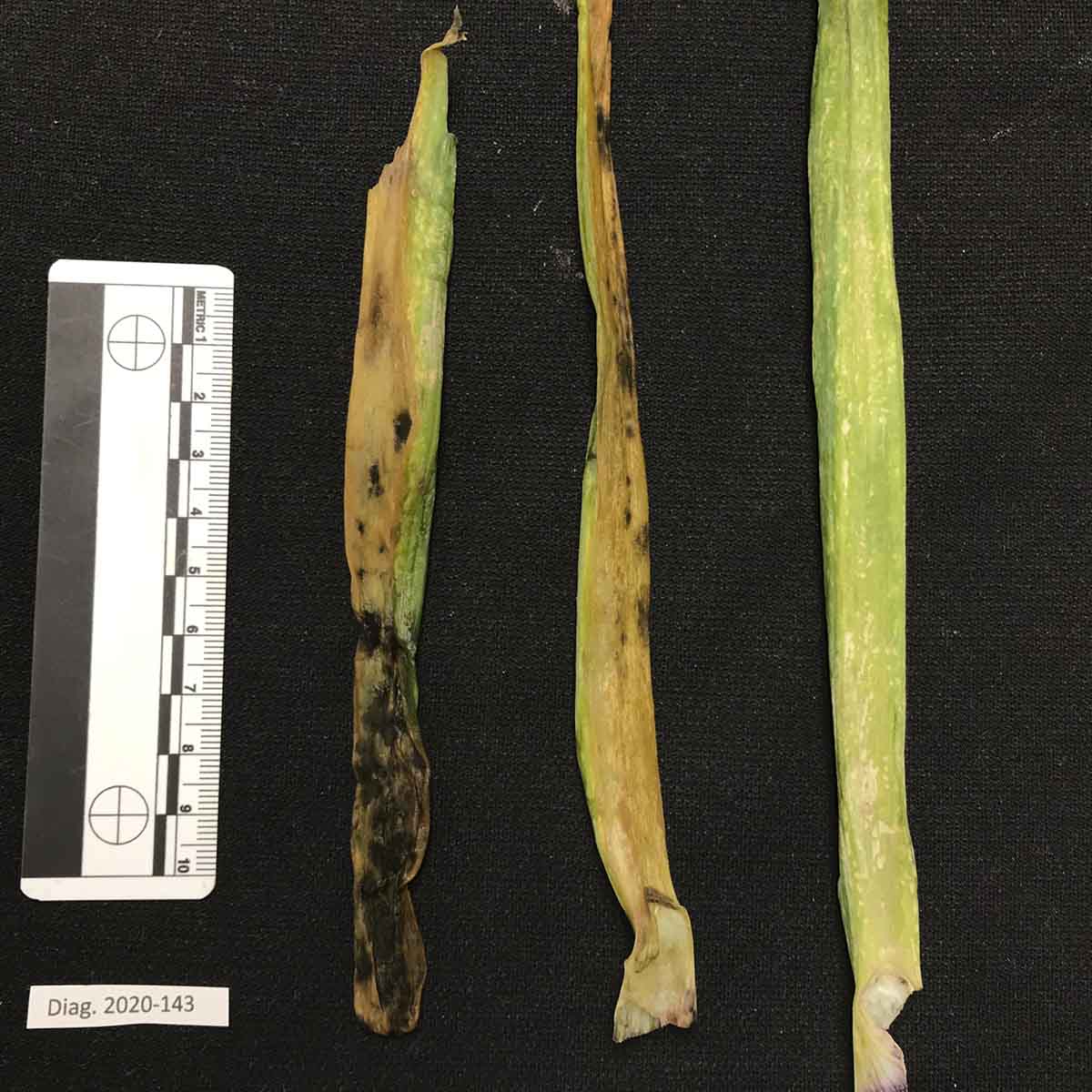
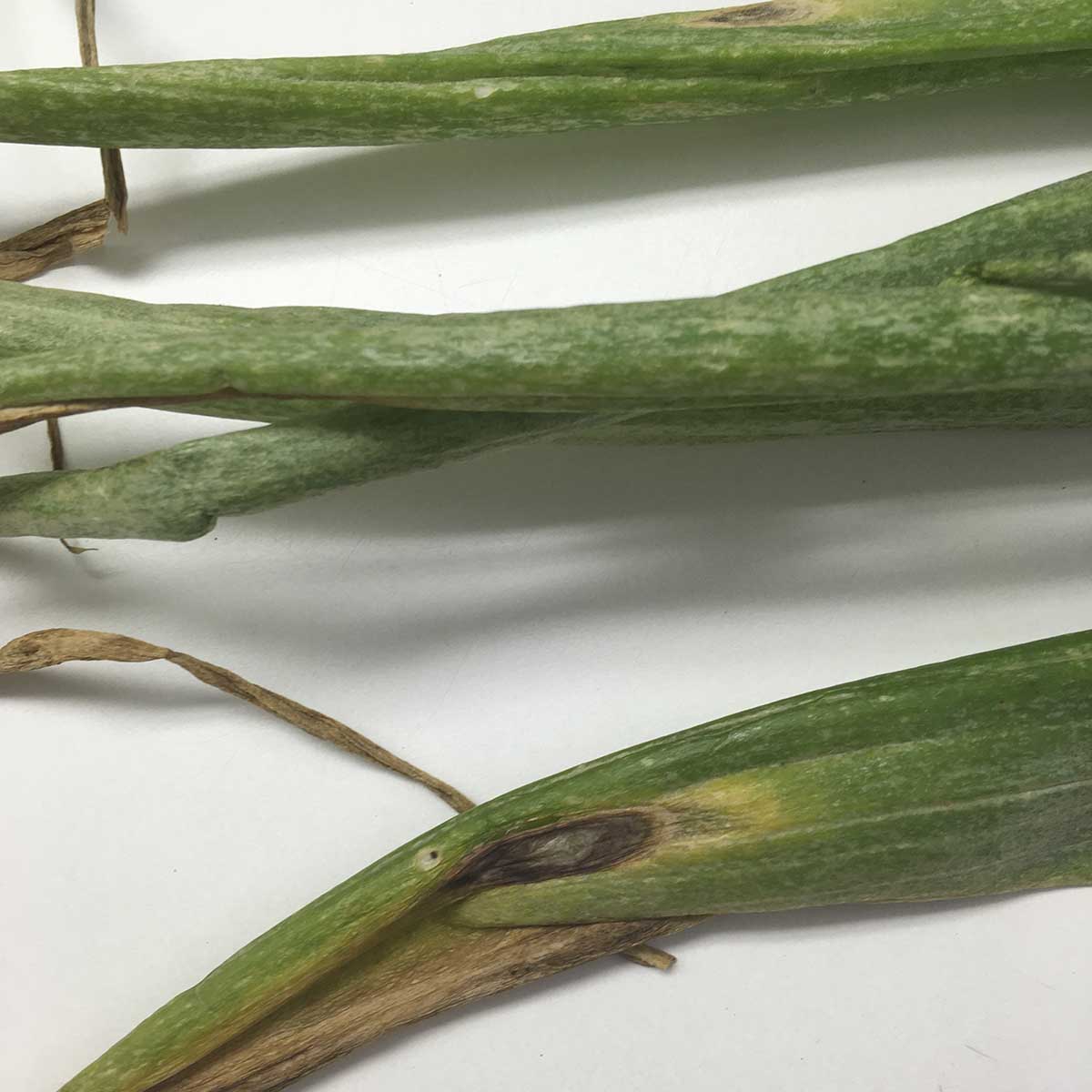
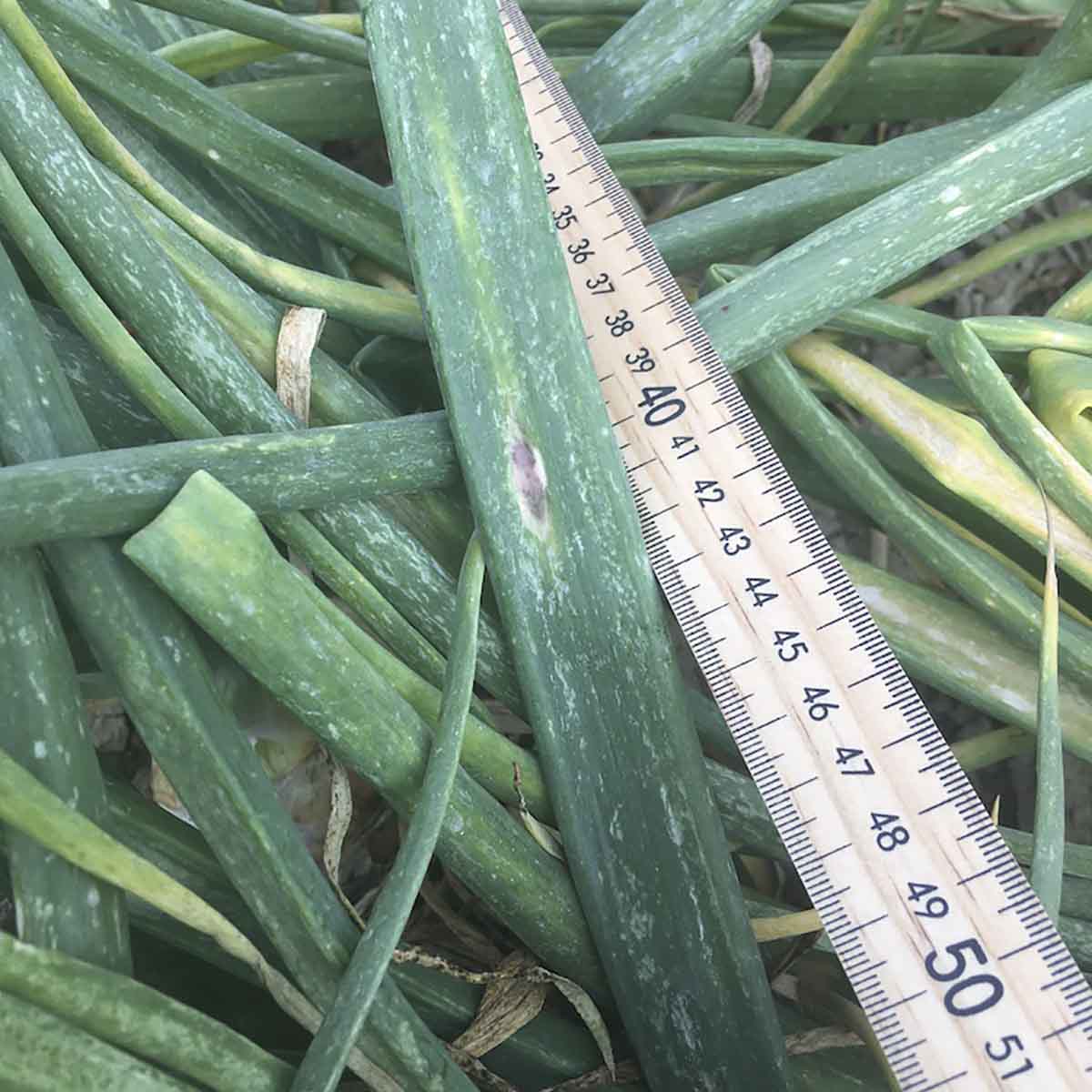
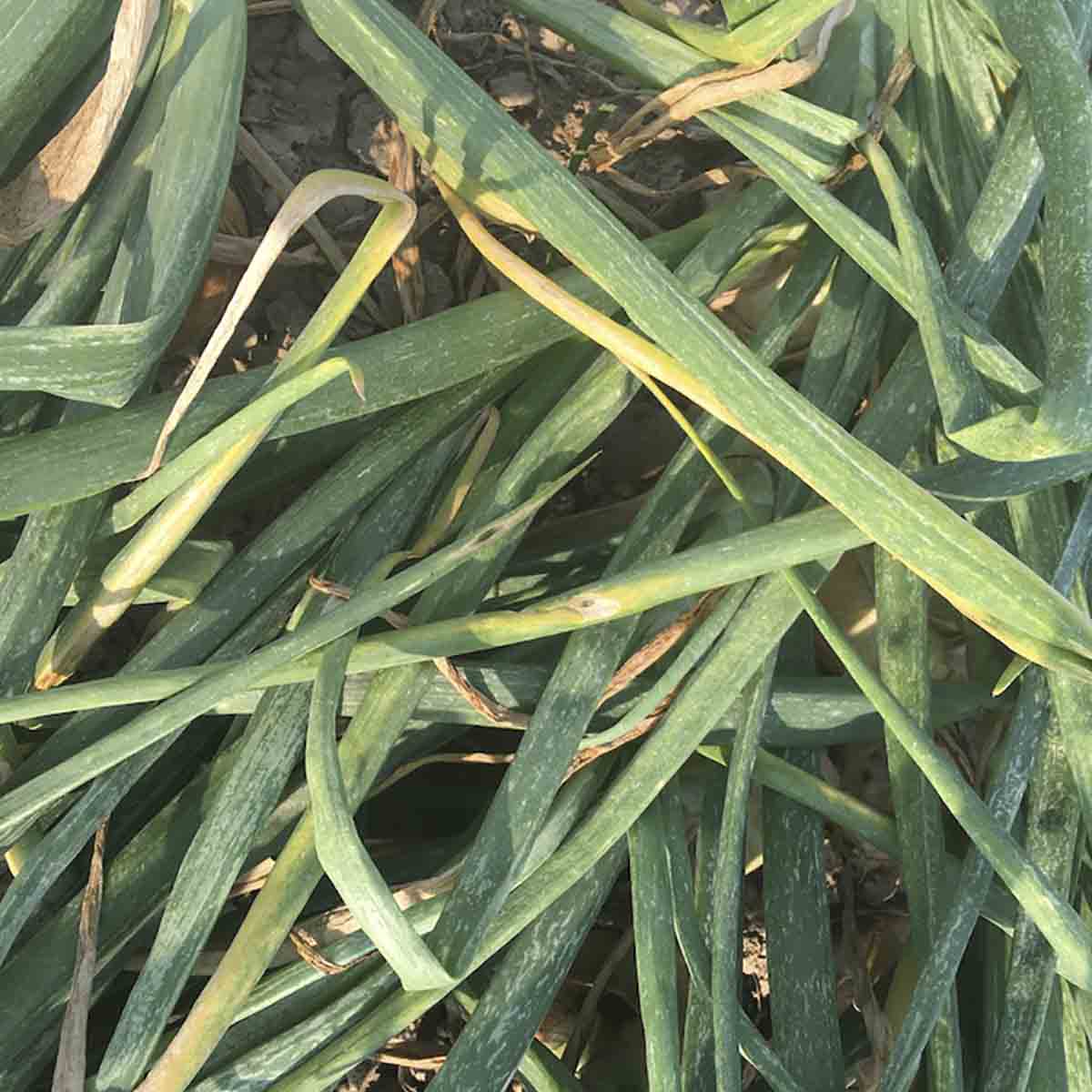

Storage rot/soft rot,
Bulb symptoms (naturally infected)
Pseudomonas spp. presents in the neck or outside scales initially and spreads to the inner scales. The pathogen presents as water-soaked lesions, usually with a yellowish-brown color. In some onions the lesions appear grey. Onions fertilized too much and onions with higher nitrogen content are more susceptible to Pseudomonas spp.


























































